Love the review and the way you wrote it. Sounds like a banger of a IEM but that’s alot of cookie dough!
Cheers Tone Deaf Monk.
TRN XuanWu
TLDR version on YouTube: TDLR - TRN XuanWu
The TRN XuanWu were sent to me by Linsoul in exchange for the publication of this review. They did not make any specific requests, therefore, I will be as sincere and unbiased as I can, following my usual approach.
You can find a (non-affiliate) link to the TRN XuanWu by visiting the version of this review published on my blog (link at the end of this post).
Intro…
I have had the XuanWu since sometime around the early part of December. I have actually tested them on a few different occasions, which I will get to in a moment, but haven’t made it to the review part until now.
These are a set of hybrid IEMs, featuring a 10mm planar driver along with a custom BA driver, all for just over 30€ (at the time of this review). I am not sure if this makes them the cheapest set of IEMs with a planar driver but they are certainly well inside the extreme budget category.
Presentation…
Presented in a black box with gold highlights and images of the IEMs on the cover, it opens to reveal the IEMs sitting in the cutouts at the top of the box with a cardboard cover that is removed to reveal the accessories at the bottom.
Other than the IEMs we receive the cable (with recessed two pin style connectors) and 7 sets of silicone eartips, one of which is sort of a mix between regular silicone tips and the spring tips by Moondrop. Apart from that, we get the usual warranty card and paperwork. We really can’t expect much more at this price.
Build and aesthetics…
While the IEMs have some originality to their aesthetics, they are mentioned (in the publicity) as being aluminium face plates, yet these are the most plastic looking (and feeling) aluminium that I have seen. If it wasn’t for the advertising saying otherwise, I would have had no doubt that they are plastic.
That doesn’t mean they are not well built, I don’t see any specific build issues and I don’t have any complaints about them at this price range. I don’t find them to be the most comfortable of IEMs but they are not bad, they just don’t “disappear” like other models do.
Aesthetics are good in my opinion, looking like something that would retail for a higher price point than they do, even if they do look like they are 100% plastic.
Sound…
I am going to be brief in this review as I really don’t get on well with the sound of the XuanWu. As I said in the intro, I have tried these IEMs on multiple occasions and kept leaving them to come back and try them later, this is mainly because I just do not enjoy them. However, I will share my opinions, even if they are in an abbreviated form.
Here is the graph of the TRN XuanWu in comparison to my usual preference target:
While the graph already points us towards me not enjoying these IEMs, there are actually other sets that have a similar (although not quite as exaggerated) tuning that I enjoy, that is mostly because of the way those (other) sets of IEMs perform.
I find that the XuanWu is not only exaggerated in the bass regions, it can also sound distorted and the IEMs (driver?) struggle to keep up with anything that is over a moderate pace, especially if the music in question is bass heavy. I just feel that low end lacks the speed that we should be able to expect from a planar and at the same time makes bass heavy tracks seem “dirty” in the low end.
At the other end of the spectrum, there is a very uneven high range that tries to counter the boosted low end but only manages to come across as harsh and irritating, to my ears at least. sibilance is very present, as is an upper sheen that is just uncomfortable.
I could continue but to be honest, those two factors just make the IEMs something that I can’t enjoy, I struggle to move my focus away from the bass and treble.
Conclusion…
As I said, this is a very brief review as I haven’t really spent too much time with the XuanWu. I have tried on various occasions to use them over a longer period but I just don’t enjoy them and seeing that I have so many things backed up, I would rather move on that spend time going deeper into a set that I clearly do not like.
This does not mean that they won’t be for anyone, as I always say, audio is very subjective and these may be something that fit your tastes perfectly, I just can’t suggest them amongst so many other sets that I enjoy in this price range.
All my reviews are also available in Spanish both on my blog (www.achoreviews.com) and YouTube (www.youtube.com/achoreviews)
All FR measurements of IEMs can be viewed and compared on achoreviews.squig.link
All isolation measurements of IEMs can be found on achoreviews.squig.link/isolation
QKZ x HBB Khan
TLDR version on YouTube: TDLR - Ep.163 - QKZ x HBB Khan
The QKZ x HBB Khan were sent to me by Linsoul in exchange for the publication of this review. They did not request anything specific and I will, as always, aim to be as unbiased and sincere as possible.
As usual, you can find a non-affiliate link to the Khan via Linsoul by visiting the version of this review published on my blog, link at the end of this post.
Intro…
The Khan is another collaboration between HBB (of Bad Guy Good Audio Reviews) and QKZ, however, as we will see, this is a bit of a different approach than previous tunings by HBB. Coming in at around 40€ (at the time of this review), placing them inside the ultra budget category (sub 50€), the Khan feature a 10mm dynamic driver for the bass along with a 7.8mm dynamic driver for the mids and highs.
Aimed at being easily driven by cell phone devices (and other small dongles), the Khan has an impedance of only 10 ohms and a sensitivity of 117dB. This easiness to drive, along with the reduced price, makes them a set that can easily be thrown in a pocket or bag for day to day use.
Presentation…
The QKZ x HBB Khan arrives in a box that is nothing really special, although they have restrained from showing quite as much info and publicity than they did on the previous collaboration, the QKZ x HBB.
Upon opening the box, we find something that is quite unexpected (at least for me), in the form of a large gold coin. One side of the coin shows the HBB logo, while the reverse side shows the QKZ logo. I have no idea what the reason is for including the coin but it certainly makes it a little different as far as unboxing and contents go.
Obviously we also get the IEMs, along with the cable, three sets of silicone tips and a rigid storage/carrying case. The case doesn’t exactly feel like a high quality case, made of fairly indelible plastic, but it is more protection than a simple bag, which is about all we can really expect for the price.
Build and Aesthetics…
The shells are 3D printed and very reminiscent of the QKZ x HBB, featuring the HBB logo in gold on the right IEM and the QKZ on the left, both behind a transparent covering but opting for a grid type design rather than the lightning found on the previous model.
The build doesn’t scream high end but there are no obvious flaws on my set and I have no complaints about the build at this price point.
Comfort is decent although I did find myself opting for larger tips which seat the IEMs slightly further out of my ear canal as I couldn’t get a correct seal sith deeper insertion (at least with the included tips). I did wear them for long periods though and felt no discomfort.
The cable is rather generic and cheap feeling, although the 3.5mm and the splitter are both metal, with a swirl (or spiral) pattern on them. Again, no complaints at this price point.
Sound…
All tracks mentioned are clickable links that allow you to open the reference track in the streaming service of your choice (YouTube, Tidal, Spotify, etc.)
Here is my usual comparison of the Khan against my personal preference target:
Now that is certainly a break from all the similarly tuned sets we have seen recently!
I expected the bass on these to give me fatigue in a very short time, yet, to my surprise, that wasn’t the case. In fact, I found that these IEMs inspired me to listen to more EDM and Hip-Hop than I have listened to in a long time. I have never really been a huge EDM fan (although at the right time and place, I have enjoyed a lot of EDM) but I was heavily involved in the Hip-Hop scene for many years (a story for another day) and while I still listen to HH, it had been quite a while since I spent a long session (actually multiple sessions) listening exclusively to HH. The tuning of these IEMs actually remind me of the tunings I used to go for in car audio many years ago, where people could hear me before seeing me.
Anyway, let’s get on with the review and take a look at them with my usual test tracks and following the usual steps.
Rather than focusing on the subbass, I am going to mention the low end as a whole, due to the way the upper midbass dip interacts with the lower bass regions. This makes for a very present but also very clean low end. “No Sanctuary Here” provides a very impressive low end rumble, making the bass seem as though it is felt although it stays clear.
That dip around 200Hz does disconnect the bass regions from the mids but it doesn’t do so in a way that seems strange. I sometimes get the feeling that on some sets that have a dip in the midbass can make it seem like someone has set the crossovers wrong on a subwoofer+mains set up, yet the Khan doesn’t give me that impression. It does have a negative effect on some tracks that utilize the roll of the midbass into the lower mids, yet works in favour of other tracks that have a larger presence in those deeper bass regions. The same dip also serves to avoid the boominess found in the low end of things like “Crazy”, where the guitar can become overly reverberant in its lower notes.
The midrange does certainly take a step back in comparison to the lows (and highs). I wouldn’t choose these IEMs for a lot of my vocal and instrument based music as I feel that the vocals don’t have as much presence as I would like, yet female vocals do seem to cut through slightly better than male vocals in this regard. With simpler tracks, this doesn’t really come across as an issue but more complex arrangements, such as “Whole Lotta Love”, does seem to overshadow the lyrics to some extent.
The higher midrange is not very present, with the usual climb actually peaking around 3.5kHz to 4kHz, this will accentuate that slight step back in vocals but also keeps things rather smooth.
The higher ranges are actually a lot smoother that I would have expected by looking at the graph. There is a good amount of presence in the high end but is not very “airy”. The sound doesn’t become overly harsh but can seem a little fragile on occasions. Sibilance is in check (as tested with the usual “Code Cool”) but is not subdued, so it will depend on the track.
I can’t say that I find sound stage to be anything above average, as with the vast majority of IEMs to my ears, yet the Khan does a decent job of utilizing that space and keeping things well place, allowing me to identify different layers without too much issue.
Details are not the strongest point of these IEMs, especially those found in the midrange, yet the lower ranges do work well to preserve those that are found in this range. It is not an overly blunted soung in general, in other words, they don’t make you feel like you are missing out on a lot of detail, but they do not stand out either.
Isolation is not actually great in the low end, yet the presence in the same region will mean that you will not notice external noise when listening to music (especially the genres that seem to work best with the Khan). The rest of the frequencies are around average.
Conclusion…
The QKZ x HBB Khan are sort of a double edged sword. On one side, it is refreshing to listen to something that is a break away from so many similarly tuned IEMs in this price range, yet on the other side, I find that it restricts the genres that I would actually use these for.
I can’t say I enjoy them with the majority of my acoustic music (which is a lot), yet I do find that I enjoy them for Hip-Hop and EDM. I am not someone who listens to much EDM or Hip-Hop (at least not recently), so that means that, while they did inspire me to spend more time than usual with these genres, I wouldn’t choose to use them on a daily basis.
A large positive is the price, which means that they are not an expensive set to have around for an alternative tuning for those times you do feel like a bit of bass centric music. I also find that they do not fatigue me, due to that dip in the midbass, so I can enjoy them for more than a few tracks (something that was not possible for me with the QKZ x HBB).
If you are someone who listens to a lot of Hip-Hop or EDM, I think that they are well worth trying out for their price tag. Yet if you are looking for a budget set of all-rounders, then I don’t think these fit that bill.
__
As always, this review is also available in Spanish both on my blog (www.achoreviews.com) and on YouTube (www.youtube.com/achoreviews)
All FR measurements of IEMs can be viewed and compared on achoreviews.squig.link
All isolation measurements of IEMs can be found on achoreviews.squig.link/isolation
KZ DQS
TLDR version on YouTube: TDLR - KZ DQS
The DQS have been sent to me directly by KZ. You could say that they were in exchange for this review but in this case, they just said that if I had time and wanted to, that they would appreciate it if I reviewed them.
I have not had any further communication with KZ about these IEMs, so there have been no requests or comments made. I will, as always, do my best to be unbiased and share my honest opinion on these IEMs.
I was going to link to the official page for these IEMs (on my blog), as I usually do in these cases, but I am not quite sure what that link is. The person who reached out to me is from kzhifi.com, which is a website that seems to be an official KZ brand web. At the same time, I have previously dealt with kz-audio.com, which also seems to be an official KZ brand web. Both webs share the same street address (at least that is what I understand from their contact pages) but have different phone numbers, so I am confused ![]()
However, seeing that the DQS don’t seem to appear on the kzhifi page but do appear on the kz-audio page, I am going to link the latter of the two. I apologize to the person who sent these to me if I am linking the wrong page, please let me know if I am.
You can find the KZ DQS link by visiting this review on my blog (link at the end of this post)
All of the links I share are always non-affiliate but in this case, I am not even sure who I am linking to, so no need to mention that I receive nothing from clicks or purchases made via the above link.
Intro…
I haven’t really been following KZ lately and although I reviewed the PR1 a few months ago, I really am not up to date on their latest releases. I am sure there have been a few as KZ are usually pretty consistent with new releases and seeing that they reached out to me in late November or early December about the DQS, I am not sure if this is still one of their most recent models or not.
The previous DQ models (DQ6 & DQ6S) that I have tried have been marketed as triple DD’s (emphasis on marketed) yet the DQS is a single dynamic driver. It also uses a semi open shell design and is available, with or without mic, for just over 15€ (at least that is the price on the KZ Official store on Aliexpress which kz-audio sends me to when clicking “buy now”, so I am still just as confused ![]() ).
).
Presentation…
The DQS arrive in the typical KZ style, a small white box from which a cardboard tray slides out revealing the IEMs beneath a clear plastic cover.
Underneath the top layer, we get the cable, 3 sizes of the “star” style KZ tips and the warranty card.
Nothing different from so many other KZ models we have seen in the past.
Build and aesthetics…
The build also follows the usual KZ style, with shells that resemble the other previous DQ models such as the DQ6 and DQ6s, along with some other models. I have to say that as far as the exterior build is concerned, I have never experienced any issues with KZ IEMs and I have no reason to think these will be any different.
The faceplate is different in aesthetics to previous models, this time with a brass coloured mesh type grill behind the openings in the plastic face plate. This does give them a very open back look. I can’t say if they are actually as open back as they look from the outside, it is difficult to tell from their publicity images and I am not going to take them apart to find out.
In general I don’t have any real issues with the build and aesthetics, they are not something I think looks amazing but they are not boring either. As far as comfort, as with other KZ models that use the same shell shape, I find them to work well for me, even for longer periods.
Sound…
All tracks mentioned are clickable links that allow you to open the reference track in the streaming service of your choice (YouTube, Tidal, Spotify, etc.)
As usual, let’s take a look at the graph of the DQS in comparison to my personal preference target.
Starting off at the bottom, we can clearly see that there is a very large boost in the whole bass range, which continues to climb the lower we get. The lower ranges actually remind me a lot of the PR1 that I reviewed not too long ago. In fact, the measurements of both sets is very similar all the way up to around 1kHz.
While this is obviously way above my preferences in the lower ranges, it is actually not as bad as it looks on paper. The subbass, while excessive on tracks like “Chameleon”, is fairly well controlled and it does not take over the whole sound. “Royals” does come across a bit more boomy and “loose”, seeming to place more emphasis on that slight “dirty” rumble that the track has.
The midbass is also fairly well controlled, especially when looking at how much there is. It is not overly bloated and while it does affect the lower mids a little, it doesn’t become an uncontrolled muddy mess. In fact, even “Crazy”, which is a track that soon shows an overly present and boomy midbass (in the form of reverb in the lower guitar notes), is quite listenable on the DQS. I honestly expected the lower end to be far worse than it is and was pleasantly surprised.
Would I pick this tuning in the lower end? Well, no, but I didn’t find myself wanting to get them out as soon as possible either.
The dip in the center of the mids is noticeable when focusing on it but in general it doesn’t stand out as being overly recessed in this area. Some tracks will show this more than others, with specific voices or instruments that have their fundamentals in the 600 to 800Hz range taking a little bit of a step back but it is certainly not something that stands out on all tracks.
The rise into the higher mids is very smooth and is almost perfect, as far as tuning, for my tastes. It works well to bring vocals forwards but is not overly harsh and doesn’t really affect the vocal range dynamics either.
Sibilance is well controlled, with Paul Simon in “Diamonds on the Soles of Her Shoes”, who can be both harsh and sibilant, being fairly well controlled. The typical “Code Cool” shows just a hint of sibilance on some words but not all “S” and “T” like on many other more sibilant models.
The upper treble is where things are not quite up to par in my opinion. There is a noticeable roll off in these upper ranges with a peak to give the IEMs a bit of air and a sensation of more detail. Unfortunately that peak can come across as quite harsh on occasions and make the treble range a little brittle and unforgiving.
Details are not really excellent. They are not terrible but I wouldn’t class them as being a strong point of the DQS. They are acceptable and you don’t feel like half the music is missing but they are not doing to be something to sit down and analyze music with.
Soundstage is rather narrow overall and while the image placement is ok, the narrow soundstage and lack of detail make things like “Bubbles” difficult to appreciate, everything seeming to blend into one rather than specific layers being separated.
Isolation is surprisingly good for a set of semi open IEMs, showing to be above average in the whole frequency range. This is one of the things that leads me to think that they are not as open as the vents would have us think.
Conclusion…
I can’t say that the DQS aren’t a good set of IEMs when I consider the fact that they are 15€. They are not my personal taste in tuning and I find that there are other IEMs around a similar price that I would pick over them but that doesn’t detract from what they do offer at this price point.
A set of IEMs that I have recommended a lot in this ultra cheap bracket (15€ or less) are the CCA CRA, also made by KZ. I actually prefer the upper mids tuning on the DQS over the CRA but, as I have mentioned before, I am not a fan of overly boosted low end and the DQS add another few dB to the CRA which are already way above my preferences. However, various people have mentioned that the CRA have received a “silent” revision, so I can’t vouch for how they sound now.
Details and soundstage are not the best, along with that sizzle in the treble range, but seriously, these are standing out due to the amount of good options in the budget range that we have received lately. I am sure that there will be many people out there that love a lot of bass and find the DQS to meet their tastes, offering them a lot of enjoyment for very little money.
__
As with all my reviews, this review is also available in Spanish on my blog (www.achoreviews.com) and on YouTube (www.youtube.com/achoreviews)
All FR measurements of IEMs can be viewed and compared on achoreviews.squig.link
All isolation measurements of IEMs can be found on achoreviews.squig.link/isolation
QoA Gimlet
TLDR version on YouTube: TDLR - QoA Gimlet
The QoA Gimlet have been sent to me by Linsoul for me to publish this review. They have not made any requests or comments and I will do my usual best to be as sincere and unbiased as possible.
I will leave a link to the Gimlet via Linsoul on my blog, which you can access by following the link at the end of this post. As always, it is a non affiliate link.
Intro…
I had never heard of QoA until I received the Gimlet. According to the packaging, QoA stands for Queen of Audio. Doing a quick search on the web with this info led me to the QoA official page which is quite a nice and modern website but is lacking any information about the brand, so I really have no idea how long they have been around. Maybe they have been around for a while and I have just not come across them.
Looking at their page, they have 8 models, with the $59 Gimlet being the most budget orientated (although there are a couple more models at a price that is not much more) and their TOTL IEMs coming in at almost ten times the price.
However, checking out the Linsoul page for these (which is linked on my blog, as mentioned above), they are listed as Kinera QoA Gimlet, so I am guessing that they are a sub brand of Kinera. I am just guessing here as I didn’t do any further investigation, I just got on with the important part (listening to them and putting together this review) but there is no mentione of Kinera anywhere on the packaging or on the QoA website.
Presentation…
I have to say that I was pleasantly surprised by the presentation of the Gimlet. They are not exactly high end IEMs but the packaging is very clean and professional looking. Inside we get the IEMs, the cable, a very nice storage/transport case and 6 sets of tips in two styles.
Nothing really out of the ordinary but everything is nicely packaged, with branding on the small bags that contain the tips and they actually gave me a first impression of being quality IEMs without even making it as far as build and aesthetics, much less listening to them. I still maintain that packaging and presentation is the least important part but it is still nice to get a good first impression.
Build and aesthetics…
The Gimlet are completely made of metal and use a simple rounded shape, with no sharp edges, that I actually find quite comfortable. They are a little on the heavier side, if you are used to plastic or resin IEMs that is, but I have not found them to be fatiguing at all even after long periods of time.
The set I received are white with a gold round plate that sports the QoA logo. I am not one for gold but I have to say that they look very elegant and with the matching white and gold cable, I would say that they look a lot more expensive than they actually are.
Everything seems to be well built, both on the IEMs and on the cable (which uses gold coloured metal hardware), so I can’t find anything to comlain about at all in this regard.
Sound…
All tracks mentioned are clickable links that allow you to open the reference track in the streaming service of your choice (YouTube, Tidal, Qobuz, Spotify, etc.)
Let me start off by saying that I really enjoy these IEMs. These are another set that prove that my preference target is really only a reference target, as when things are done properly, I enjoy them even when moving away from my usual preferences. It is also worth noting that I chose the tips with the blueish tint to them.
Here is the graph of the Gimlet in comparison to said target:
I have found that these IEMs work very well for my usual music taste but I will focus, as always, on the test tracks that I use for my reviews and comparisons.
Starting off with the subbass and, of course, “Chameleon” by Trentemoller, there is plenty of that low rumble to do the track justice, without the Gimlet seeming to lose control at all. The same can be said with the subbass in “Royals”, where they stay calm and collected but show that “dirt” that is present in the recording. These may not be for the most hardcore bassheads out there but I really don’t think that the majority of bass lovers would have any issue with the quantity. The quality is also decent. It may not be the most amazing subbass out there but is certainly above the majority of similarly tuned sets in a similar price bracket.
Moving into the midbass and turning to something more EDM, in this case “Sun Is Shining”, I find the bass to be clean and articulate. There is a nice punch to the bass without it becoming muddy or taking over the low end. Focusing on “Crazy”, which I usually use to find out fairly quickly if the low end is too much for me, I found that while it is boosted, it is not annoying. There is a slight hint of the reverb becoming a little too much but the Gimlet don’t seem to lose control of it and they certainly didn’t fatigue me like so many other sets do.
There is a dip in the center of the mids but it is not something that I found to really stand out. It may be more noticeable on instruments that have root notes residing in that area but I certainly didn’t find it affected vocals or acoustic guitars in a negative way. In fact, I found the overall timbre of guitars to be slightly on the war side but very realistic.
As we head to the upper mids, there is a nice presence that brings vocals forward, giving them a bit of a focus but without them becoming overpowering. Using Beth in “Don’t You Worry Child” as a test for harshness, I didn’t find her to become unbearable. She is still quite harsh as her voice is that way in the recording, but I didn’t find it to be overly exaggerated.
In the higher ranges, there is a nice sensation of extension and air, with details seeming realistic and not artificially exaggerated by certain peaks. Sibilance is not overly present either. Using “Code Cool” as my usual test, with my usual unscientific scale of -12 to +12 on Patricia Barbers voice, I would actually place her between a -1 and -2. Paul Simon, in “Diamonds On The Soles Of Her Shoes” can also exhibit sibilance and harshness on many sets of IEMs, yet the Gimlet do keep him in check fairly well.
Details are good and so is soundstage. They are not going to give you the impression of a wide open and huge soundstage, I don’t find that IEMs do that very often, but they are definitely above average in this regard. Image placement is good and so is the spacing between the layers of vocals on “Strange Fruit” by Dominique Fils-Aime. Everything is easily tracked and while I have heard better, I would still say that the Gimlet perform very well in this regard.
Isolation is not the greatest on the Gimlet, being below average across the whole scale. I wouldn’t recommend these IEMs for use in loud environments but they still work very well in offices and places that aren’t too loud.
Conclusion…
I have been very impressed with the QoA Gimlet and while they are just over the 50€ I set for the “Ultra Budget” category, I have to say that I think that these are a set that is well worth taking into consideration for those on a tight budget.
They are well built, they look good (to my eyes of course) and above all, they sound good. During the week I have been listening to them, I found that I enjoyed everything that I listened to and actually found myself adding a bunch of music to my “New Discovery” list to revisit at a later date. What more can we ask than to enjoy the music?
As with all of my reviews, this is also available in Spanish both on my blog (www.achoreviews.com) and on YouTube (Acho Reviews - YouTube)
All FR measurements of IEMs can be viewed and compared on achoreviews.squig.link
All isolation measurements of IEMs can be found on achoreviews.squig.link/isolation
QoA is the sister company of Kinera. iirc, its the wife or sister of the Kinera boss that started it.
Yeah, they are posted on Linsoul as Kinera but no mention of Kinera on any packaging or their website etc.
Ok, so the following are not IEMs but I can’t find a thread for them and I can’t open a new thread under headphones, so if a thread is started, I would be more than happy to move this post across.
Thieaudio Ghost
TLDR version on YouTube: TDLR - Thieaudio Ghost
The Thieaudio Ghost have been sent to me by Linsoul in exchange for the publication of this review. They have not made any specific requests or comments and, as always, I will do my best to be as unbiased and sincere as humanly possible.
You can find the Thieaudio Ghost via Linsoul by visiting my blog (link at the end of this post) where I will leave a direct link, or just do a quick google search ![]()
As with all links that I share, it is a non-affiliate link, meaning that I do not benefit from any clicks or purchases made via the link.
Intro…
The Thiaudio Ghost is a new release from the brand which is more known for their IEMs than over ear headphones, although these are not the first set of headphones that they release. At the time of writing his review, I actually have no idea what the price of these headphones is, as they are not yet officially available. Although I am putting this review together now, I will not be publishing it until they are officially released, so I will check the price and add it below.
That means that I am certainly not judging these headphones as “for the money”, as I don’t know how much “the money” will be. It’s always fun to have a guess and then see how wrong I am.
Anyway, the Ghost is an openback set of headphones that uses a 40mm Sapphire dynamic driver (I don’t know what a Sapphire dynamic driver is, sorry) and at a glance, remind me of the Shure SRH1840.
I haven’t had a chance to try out much from Thieaudio, except for the Legacy 2, and I was actually quite interested in getting to try out these new headphones from the brand.
Edit: At the time of publishing this review, the Thieaudio Ghost are available on Linsoul for $129, which is actually less than I would have guessed. Please remember that the following review and opinions were written before I had any idea of the price.
Presentation…
A cardboard sleeve with an image of the headphones and other information slides away to reveal a simple black box, with no logo or other markings.
Opening the box, we find a nice storage case that the headphones are packed inside, along with the usual paperwork and warranty stuff etc.
The storage case is semi-rigid and shaped to be thinner at the top than the bottom, where the cups sit. Although the case is sort of moulded to the shape of the headphones, there is a surprising amount of space inside, giving me plenty of room to carry the Gryphon inside the case with the headphones.
Other than the above, we also get the cable (I will mention more about it in a moment) and a 3.5mm to 6.35mm adaptor. For those that are used to opening IEMs and receiving all kinds of things, this may seem pretty basic but is actually quite good for a set of headphones, especially because we get the case.
Build and aesthetics…
I already mentioned in the intro that they remind me of the Shure SRH1840 as far as aesthetics, maybe with a blend of Sennheiser thrown in. In fact, when wearing them, they are very reminiscent of the HD6X0 line, but I find the Ghost to be more comfortable, mostly due to the extra padding of the headband.
The build quality is not the best but it is not terrible either. They have opted for metal yolks which seem to be very sturdy and well assembled, yet the plastic on the cups is a little cheap feeling, as are the plastic covers to the adjustment sliders. The pads are very similar to the Sennheiser pads but a little softer, just like the headband, which is nicely padded and very soft to the touch.
I sort of have mixed feelings in general about the build, some things I think are very well done while others seem to have not had as much effort put into them. The grilles are also plastic, with a zig zag pattern to them and a gold accent around them. These don’t look bad but are again a little cheap feeling.
The included cable is something that I am not used to seeing. It is a ribbon style cable which upon first inspection I thought I was going to hate. However, after using the headphones, I have found that I actually like the cable quite a lot and have no complaints about it at all.
Sound…
All tracks mentioned are clickable links that allow you to open the reference track in the streaming service of your choice (YouTube, Tidal, Qobuz, Spotify, etc.)
If you have watched my TLDR video on YouTube, I have said that the worst thing about these headphones (in my opinion of course) is that they lack excitement. As I spent time with these headphones, I would be listening to a certain genre of music and find that, while it did not sound bad, it just didn’t come across as great. It’s common for headphones to work well for certain genres better than others, so I would move on to a different style of music and come to the same conclusion, it doesn’t sound bad at all, just not exciting. This is something that I honestly found across all genres.
But let’s go step by step, as usual, and start off with a look at the graph:
I have included the HD6XX as a reference on the graph as I don’t have a database of headphone measurements like I do IEM measurements, so it’s not easy to compare between many other models (hopefully I can catch up on headphone measurements and get to presenting them in a squig.link soon). So, I thought the HD6XX is a well known reference and it is also a headphone that is useful as a comparison in this case, as we will see.
Starting off at the subbass, there is some roll off and I find that this is noticeable in things like “Chameleon” or other tracks/genres that have a large subbass presence. I spent time listening to HipHop (I really did go through a lot of genres with the Ghost) and I don’t think it would be something that I would suggest to the deep bass hip hop lovers out there (although, yet again, it doesn’t sound bad).
Moving into the midbass, while on paper it looks almost identical to the HD6XX, I actually find that it doesn’t have as much warmth in these specific ranges as the HD6XX does. It is not cold or lacking, and in fact, the upper mids/lower treble (which I will get to next) do maybe allow these regions to be more present, yet when isolating some of my bass guitar tracks, I didn’t find that it was really boosted much in these regions. It’s a bit of a strange sensation as the warmth is there but I feel it is more an illusion created by the upper ranges than an actual presence of warmth. I didn’t find older rock, such as “Whole Lotta Love” to really place more emphasis on the bass, yet, at the same time, it does sound rather smoothed over.
The upper mids, and lower treble, is where things are… let’s say… different. While everything up to the higher end of the mid range is very reminiscent of that Sennheiser HD6XX sound, the upper mid range (and the lower treble) is not boosted at all. Where the HD6XX brings vocals forward and makes them more intimate, the Ghost doesn’t do this, it keeps vocals mixed in with everything around them, never seeming to take presence up front.
I listen to a lot of vocal centric music and I kept expecting the vocals to be clearer and more distinct, yet when the voice kicked in, it always left me wanting something more. Again, at the risk of being repetitive, they don’t sound bad, they just don’t make their presence felt.
More of the same happens in the higher ranges, where there is no real sensation of air or openness. And while everything is there, nothing really stands out, leaving things to just be a little “blunt” for the lack of a better word. People speak about the “Sennheiser Veil” and I think that the Ghost could be described in a similar way, although different (if that makes any sense at all).
Details are there but once more, they are not something that stands out. It is as though there is some life missing from them, even if they are present. Soundstage is also quite close, not claustrophobically close but they don’t portray a sensation of openness in this regard either.
Conclusion…
The Thieaudio Ghost are a set of headphones that just don’t really stand out at anything. At the same time, nothing really sounds terrible on them either, they are just not exciting in any way shape or form.
They are not a bass heavy set of headphones, they are not a mid centric set of headphones, they aren’t a set of extremely detailed and clear headphones, they are just constant, as the graph shows.
That doesn’t mean that they can’t become a very interesting set of headphones with the use of EQ, as they really are like a blank canvas, but I don’t usually go into depth on the use of EQ as there are so many options.
They are comfortable, they are light weight and by no means are they offensive in their tuning, so there is really nothing negative to say about them. It’s just that if I was asked to describe them in a few words, I really don’t think I could, except for saying that they are just not exciting.
This review is also available in Spanish both on my blog (www.achoreviews.com) and on YouTube (Acho Reviews - YouTube)
TKZK Ouranos
TLDR version on YouTube: TDLR - TKZK Ouranos
To avoid being repetetive in my reviews, you can find all the info about how I create the reviews, equipment used, how I receive the products and how to interpret my reviews by visiting: About my reviews
The TKZK Ouranos have been sent to me by Linsoul in exchange for this review. As usual, they have not made any specific requests and I will do my best to be as unbiased and sincere as possible.
I have left a non-affiliate link (as always) to the Ouranos via Linsoul on my blog, link at the end of this post.
Intro…
TRZK is another brand that I hadn’t heard of until I received these IEMs from Linsoul. A quick search of the web doesn’t bring back any results, except for Linsoul (at least on the first couple of pages of results). Linsoul has two models by TKZK, the Wave at $39 and the Ouranos at $55. This places the Ouranos just about on the 50€ limit that I like to mention as ultra budget here on Acho Reviews.
There is not a huge amount of information about the model except for the fact that it uses a 10mm driver and has a sensitivity of 110dB with an impedance of 32 Ohms.
Presentation…
The Ouranus come in a square black box with a lift off lid, inside of which we find the IEMs, the cable, 6 sets of silicone tips (in two styles) and a small drawstring bag for storage.
There really isn’t anything special about the presentation although there is nothing to complain about either, so let’s move on.
Build and aesthetics…
The IEMs are off a very generic shape and size, 3D printed in resin, which should work as far as comfort for the majority of users. The nozzles are longer than usual which led me to opting for the small size of tips with the grey core in order to get a comfortable fit and good seal. Once I decided on these tips, I found them to be comfortable for longer sessions.
The build is decent, nothing extraordinary, just another 3D resin printed shell but with no issues that I have come across. As far as aesthetics, the shell is black with a faceplate that combines copper and black coloured flecks set into the resin, with the TKZK logo in a gold colour. Again, nothing spectacular but they look decent enough and have actually grown on me since I received them, especially in this budget range.
The cable is a simple double twist in a titanium colour that matches the IEMs well and uses metal hardware and connectors.
All in all, the build and aesthetics are more than adequate for the price range that these IEMs sit in.
Sound…
All tracks mentioned are clickable links that allow you to open the reference track in the streaming service of your choice (YouTube, Tidal, Qobuz, Spotify, etc.)
Here is the graph comparing the Ouranos to my usual preference target:
Starting off with the subbass and the usual “Chameleon” work out, there is enough in the lowest frequencies to appreciate the track, however, the control and clarity of the lower rumbles is not the best. The Ouranos do seem to lose a bit of control in these ranges and, while it doesn’t take over the whole tuning, it is a little too present and “boomy” for my personal tastes.
The mid bass suffers from a similar issue. While the midbass is not too excessive in its presence, there is a general lack of control and can once again come across as boomy on tracks like “No Sanctuary Here” by Marian Herzog feat. Chris Jones or “Sun Is Shining” by Bob Marley & Robin Schulz.
The mid range is well balanced and there is no real bleed from the lower ranges into the mids. I did find that the electric guitar on “Whole Lotta Love” overshadowed the vocals a little but the result was not terrible by any means in these ranges. The same could be said about “Don’t Start Now” where the instruments are a little too powerful for the vocals but this is really a minor gripe.
Moving through the upper mid range, the response is smooth and things don’t come across as harsh. Even Beth in “Don’t You Worry Child” is listenable on the Ouranos, maintaining a little of that harshness that is present in her voice but smoothing it slightly, making it more tolerable than on many other sets.
The upper ranges are also rather smooth and relaxed, while maintaining some sensation of air and clarity. Sibilance is kept in check fairly well with the usual “Code Cool” test and also Paul Simon on “Diamonds On The Soles of Her Shoes”. There is a slight hint but it is certainly reduced in comparison to what I feel is “normal”.
As far as details, the Ouranos is not really a set that stands out in this regard and while the soundstage is not bad (maybe slightly above average for an IEM), with layering that is also decent enough, there is a sensation of things not being quite as “lively” and detailed as they should be on tracks like “All Your Love (Turned Into Passion)” or even “Strange Fruit”, where the vocal layers are separate but seem to be a little short on the small details that make the distinguishable.
Isolation is around average for the Ouranos, meaning that they should work well enough for usual surroundings but will suffer in very noisy enviroments.
Conclusion…
We have been spoiled by so many ultra budget sets lately that it makes it difficult for new arrivals in the category to stand out and make a name for themselves. The Ouranos are by no means a bad set of IEMs but they aren’t really anything that places them in a position to compete with some of the “better” models in their price range (I put better in quotes as this is a very subjective term).
The bass ranges are a little boomy and “loose” for my personal tastes but again, that is because they have some tough competition to be compared against. I think that they are good enough for theirr price range, in other words, I don’t feel that they are overpriced or are something that most people would regret buying, they are just not the top of their range (in my opinion of course).
As always, this review is also available in Spanish both on my blog (www.achoreviews.com) and on YouTube (Acho Reviews - YouTube)
All FR measurements of IEMs can be viewed and compared on achoreviews.squig.link
All isolation measurements of IEMs can be found on achoreviews.squig.link/isolation
Celest Pandamon (by Kinera)
TLDR version on YouTube: TDLR - Celest Pandamon (by Kinera)
The (Kinera) Celest Pandamon were sent to me by Linsoul in exchange for the publication of this review. I have not received any specific requests or comments and will try to be as unbiased and sincere as humanly possible, as usual.
As always, I have left a (non-affiliate) link to the Pandamon via Linsoul on my blog, link at the end of this post.
To avoid being repetetive in my reviews, you can find all the info about how I create the reviews, equipment used, how I receive the products and how to interpret my reviews by visiting: About my reviews
Intro…
I have to say that when I received the Pandamon, I was rather surprised and had absolutely no idea what to expect. In my normal procedure, I didn’t do any research into the model and had absolutely no idea what they were, except for something with an angry panda on the box (and IEMs).
After finally listening to them for a while (and being quite surprised at what I heard), I finally got around to doing some research. Selling for just under 50€ (at the time of this review) they feature a 10mm square planar driver with an impedance of 9 Ohms and are actually made by Kinera. Linsoul actually shows them as Kinera Pandamon on their site, whereas the box does mention Kinera in one of the contact options but the rest just refers to Celest.
So, now that we know what they are, let’s talk about how they perform.
Presentation…
I can do nothing but give them full marks for originality. The box shows a very angry looking panda, with a transparent window above that lets us see the IEMs in the interior.
Inside the box we find, along with the IEMs, 6x sets of silicone tips (in two types), the cable, a storage pouch (of the type with a spring loaded closure), a cleaning brush/tool, a small booklet and some kind of pendant that also shows the angry panda with a small silver coloured chain that runs to a small plaque at the other end with Celest engraved on it.
The presentation keeps up with the Pandamon theme throughout, even telling the story on the outside of the box.
Again, all I can do is give them points for originality (whether the theme is something I like or not).
Build and aesthetics…
The first thing that obviously jumps out at us is the Pandamon face on the IEMs faceplate. The IEMs are round and the faceplates have a silver metal theme going on, although they are made from plastic. There are openings on the faceplate with mesh behind which make them look rather open, although, as in most cases, they are not as open as the meshing would lead us to believe.
The IEMs are incredibly lightweight and I find them to fit comfortably in my ears, feeling absolutely no fatigue from the fit even after hours and hours of use. The build also seems to be pretty good, with all the small details of the faceplate (which are quite complex) looking well done even upon closer examination.
To be honest, I am not a fan of the aesthetics of the Pandamon, I don’t think I would find myself wearing these out in public, just not my style. Yet, again, they are definitely original and may be much more appealing to a different (younger?) audience.
The included cable is also decent, although I am not really a fan of the plasticy finish of it. The connectors are metal and the cable is comfortable and non-tangly (which is a word that I am sure doesn’t exist), it is just that outside material that doesn’t appeal to me.
Sound…
All tracks mentioned are clickable links that allow you to open the reference track in the streaming service of your choice (YouTube, Tidal, Qobuz, Spotify, etc.)
As I said, when I started listening to the Pandamon, I didn’t know what to expect. I guess my mind automatically thought they would be some sort of V shaped tuning aimed at the masses, based on the aesthetics (preconceived opinions are always there, no matter how we try to avoid them), but they are certainly not that. In fact, they present a tuning that I am quite fond of.
Here is the usual graph comparison between them and my personal preference target:
We can see on paper that they are not that far away from my preferences, which doesn’t automatically mean that I will like them but I do find that I have enjoyed listening to them.
Starting with the subbass, these are definitely not IEMs that are aimed at giving you a lot in these lower ranges. They are rather calm in the subbass region, without any additional boost in comparison to the mid bass. “Chameleon” can come across as a little thin in the low end, even to my tastes (being someone who is by no means a bass head). This doesn’t mean the subbass is bad, just that it is not really that present.
Moving into the midbass, it is again not something that is going to appeal to those who like a boosted low end. The low end is quite calm in general. The performance of the planar driver is decent and all notes in the midbass are clearly defined but Ido thing that some people will find it lacking some warmth for their tastes. Listening to “Smooth Operator”, the bass guitar is very clear but does not really have a lot of “body” to it.
This does make vocals, like Sam Smith in “HIM”, take a step forwards and the piano take a little bit of a background role. This can be very enjoyable for those moments when you want the vocals to take the front stage but I wouldn’t recommend these to those who want to listen to things like EDM with a nice bass presence. Again, the bass is very clear and is not missing, it just doesn’t have the body and warmth that many other sets do.
Towards the top of the midrange, there is quite a smooth climb to the main presence point just over 2kHz and this forms part of that extra step forwards in vocals that I just mentioned. For example, “Sittin’ On The Dock Of The Bay” places Sara Bareilles very upfront. I do find this very enjoyable for a lot of my vocal centric music yet, for something more rock orientated, such as “Bombtrack”, it can place a lot of emphasis on the midrange of the guitar.
The treble range is quite smooth and while there isn’t a huge amount of air, the overall sound signature does make things seem a little more present in these ranges. Sibilance is pretty well controlled, without things coming across as harsh in these upper ranges.
Details are not great although the tuning does help with being able to appreciate those that are there. By this I mean that the Pandamon are not going to suddenly reveal things never heard before but at the same time, they never come across as overly blunt in this regard. Specifically focusing on certain background details that I know are there, they can be heard on the Pandamon but they don’t jump out at you.
Soundstage is another of those that I find to be around average with image placement being good but certainly not pin point. Separation of the layers in vocals in “Strange Fruit” is acceptable but I wouldn’t say it is amazing.
Isolation is quite a way below average but as I said earlier in the review, I can’t see me going out in public with these IEMs anyway, so noise shouldn’t be an issue ![]()
Conclusion…
I have been pleasantly surprised by the Pandamon, they certainly aren’t what I thought they were going to be when I first opened them. The sound signature is something that gets close to my preferences and although I would like a little more in the low end (which is something I don’t say often), in general they are a nicely balanced set of IEMs for those who want a more “neutral” sound.
The details are not the best but they are not bad either and the overall presentation of the IEMs is something that I find non-offensive and fairly well done. Yes, there are points that can be improved but that is usually the case with most IEMs.
I am not a fan of the aesthetics but that is obviously something very personal. I am just not one for wearing cartoon characters, I guess I am more of the boring type for that kind of thing.
They are certainly something different and it is always refreshing to see things on my desk that break away from the routine, whether I like them or not. In this case, I have enjoyed listening to them.
As always, this review is also available in Spanish both on my blog (www.achoreviews.com) and on YouTube (Acho Reviews - YouTube)
All FR measurements of IEMs can be viewed and compared on achoreviews.squig.link
All isolation measurements of IEMs can be found on achoreviews.squig.link/isolation
Kiwi Ears Orchestra Lite
TLDR version on YouTube: TDLR - Kiwi Ears Orchestra Lite
The Kiwi Ears Orchestra Lite have been sent to me by Linsoul in exchange for the publication of this review. As always, they have not made any requests or comments and I will do my best to be as sincere and unbiased as humanly possible. However, it is always good to consider that it has not cost me anything to try out these IEMs.
As always, I will leave a link to the Orchestra Lite via Linsoul on my blog (link at the end of this post)
As with all links that I share, this is a non-affiliate link, meaning I do not benefit from the link in any way.
To avoid being repetetive in my reviews, you can find all the info about how I create the reviews, equipment used, how I receive the products and how to interpret my reviews by visiting: About my reviews
Intro…
The original Kiwi Orchestra was a set of IEMs that got quite a bit of praise back in 2021, with Audio Discourse (more specifically @antdroid) saying that it was the best IEM under $500 at the time. I haven’t had a chance to listen to the original Orchestra but I usually find that my tastes align quite a bit with Antdroid’s. The Orchestra (OG) featured 8 BA drivers (2 lows, 4 mids and 2 treble) and retailed for $499.
Fast forward to 2023 and Kiwi Ears brings us the Orchestra Lite, once again featuring 8 BA drivers in the same configuration (2 lows, 4 mids and 2 highs) but this time coming in at $249, half the price of the original.
Now, I obviously can’t compare the Lite to the Original as I haven’t heard the latter but I have heard a lot of good performing IEMs lately and straight off the bat, I can say that the Orchestra Lite is one of them.
Presentation…
The presentation is nothing extraordinary but is nothing to complain about either. Arriving in a simple box with an image of the IEMs on the front along with the logo, it opens to reveal the IEMs sitting in a foam cut out.
Below this we receive a Kiwi Ears branded semi-rigid transport/storage case which contains the cable and a large selection of tips (9 sets in total of three different types).
As I said, nothing out of the ordinary as far as presentation but well packaged and containing the necessary good to enjoy the IEMs out of the box.
Build and aesthetics…
The impression that the Orchestra Lite gives is that it is a very well made IEM, with attention paid to detail. It is a resin build featuring a coloured faceplate and a clear shell through which you can see the drivers, crossovers and even a Kiwi Ears logo on one of the BA drivers.
The IEMs are available in blue or green, in my case I received the blue, and I have to say that they are very good looking IEMs (even if aesthetics are very personal). The marble style swirled finish of the face plates looks great, combining different tones of blue and featuring the Kiwi Ears logo in silver.
As far as comfort, I decided on mid sized tips and found the Orchestra Lite to be very comfortable, even for longer listening sessions. These are on the larger size (think B2 Dusk) so ear size may come into play depending on your anatomy.
One issue to consider is that they are unvented which may cause pressure build up and could result in discomfort to those who are sensitive to this. I did have a few occasions when I felt the pressure build up but reseating the IEMs and making sure to release the pressure when inserting worked well for me personally.
Sound…
All tracks mentioned are clickable links that allow you to open the reference track in the streaming service of your choice (YouTube, Tidal, Qobuz, Spotify, etc.)
Let me start off by saying I used to have a bit of a bias against all BA IEMs (I still do to some extent) as I find that, in the majority of cases, the bass of all BA IEMs is a little lifeless. I don’t mean it is lacking in quantity, rather that it just doesn’t sound natural to me. I believe it is due to the amount of years I have spent listening to bass through dynamic driver speakers (both music and bass playing) and that has just become “normal” for me, so I tend to find that BA doesn’t quite cut it. That is until the Helios came along and threw that theory out of the window. So I am no longer someone who thinks that BA bass will automatically sound unnatural but I do still find that many IEMs do sound this way.
But anyway, enough rambling and lets get into the sound of the Orchestra Lite, fist looking at the graph comparing them to my usual preference target (as always, my target is just a reference, not a rule as to whether I will like something or not):
Starting off in the lowest regions, there is plenty of presence in the usual “Chameleon” test, presenting a low end rumble that is clean and detailed (as far as subbass detail goes of course). I have to say that the seal and fit of the Orchestra Lite is very important, well, it’s very important with any IEM but in the case of the OL, the smallest of issues with seal makes the subbass all but disappear.
The transition from the subbass into the midbass is a little on the warm side but I don’t find this to be a negative on the OL. Listening to something electronic like “Sun is Shining”, there is no sensation of bloat in the midbass at all, with everything sounding clean and balanced in the low end. If you are someone looking for a large bass boost then these IEMs are probably not going to fit your tastes, yet they work well for my tuning preferences in these ranges. For example, “Bury a Friend” has plenty of rumble in those low vibrations but without seeming to lose control or take over the sound signature at all.
If we take something more acoustical, without a subbass presence, the low end could come across as a little “polite” with things like acoustic guitars and basses. In my typical test using “Crazy”, the reverb in the low end of the guitar is present but is never overpowering, making it a very fatigue free listen for me.
In regards to what I said a moment ago about the BA bass not sounding natural (I don’t want to use the infamous “BA timbre” reference), in the case of the Orchestra Lite it is far better than on other BA options I have heard. It is not quite on a level with the Helios (which is to be expected) but is closer to natural than artificial.
Moving into the mid range, the mids are again very clear and well balanced. They portray a good sensation of detail but could be a little on the cooler side, missing a little bit of warmth in the lower mids to round out that natural timbre a little on things like the bass guitar in “Elephants On Ice Skates”.
Vocals are quite forward, especially female vocals, which are clearly the center of the OL presentation. With vocals that are a little harsh in their presentation, such as Alicia Keys in “No One (Acoustic)” or Beth in "Don’t You Worry Child”, this can be a little overpowering on these IEMs due to how forward they are. They are certainly not the harshest of IEMs but that focus on upper mids and treble ranges can become fatiguing with some tracks that are not smooth in their recordings.
The upper ranges are possibly the least balanced out of the whole signature. Sibilance is actually not bad (with the usual “Code Cool” test) but it is noticeable on some parts of the track. There is a decent extension and the upper ranges do come across as detailed but things like cymbals can come across as a little uneven, sometimes seeming to fall behind the upper mids but with peaks appearing now and again.
Details are good in general, with good image placement and a soundstage that is also fairly good, at least above average in IEM terms. I did find that if a lot was going on in the upper ranges then the separation of layers could suffer but in more relaxed tracks it seemed to do a decent job.
One last thing to note is that the Orchestra Lite do reveal noisy sources quite a bit, with hissing (on things like the Go Blu with the balanced out) being more noticeable than on many other sets.
Conclusion…
Not too long ago I reviewed the Kiwi Ears Cadenza and it became one of my favourite budget sets of IEMs, one that I have absolutely no doubts about recommending to those who enjoy similar sound presentations to myself. In the case of the Orchestra Lite that comes in a 7 times the price, I feel that I am a bit more hesitant to do so.
It is not that the Orchestra Lite is a bad set of IEMs, far from it, in fact, I think they are a very good set of IEMs, yet they do have a few things that I can see not working for some people. The performance is good, they are amazingly built, look great and are, in general, something that I think will impress a lot of people. Yet on the negative side, the low ranges are still not 100% natural to my ears and the upper ranges could use some work.
If you are looking for a more analytical sound signature, something that is balanced and maybe leads to the colder side of neutral, then I think that you can expect a lot of enjoyment from the Ochestra Lite, yet if you are more on the warmer and fun side of things, then these will probably not fit your preferences.
Again, I feel that these are a great set of IEMs, just that they won’t be for everybody (well, no IEMs ever are!).
As always, this review is also available in Spanish both on my blog (www.achoreviews.com) and on YouTube (Acho Reviews - YouTube)
All FR measurements of IEMs can be viewed and compared on achoreviews.squig.link
All isolation measurements of IEMs can be found on achoreviews.squig.link/isolation
TLDR version on YouTube: TDLR - Plussound Allegro
The Plussound Allegro have been sent to me as part of a tour for me to try them out and share my opinions in this review. Plussound have not made any requests other than fixing a limit of one week to spend with them.
I will do my best to be as sincere and unbiased as humanly possible but it is always good to consider the fact that it hasn’t cost me anything to try out these IEMs.
The official page for the Plussound Allegro is here: PLUSSOUND | Earphones | Allegro
As always, this is a non-affiliate link.
To avoid being repetetive in my reviews, you can find all the info about how I create the reviews, equipment used, how I receive the products and how to interpret my reviews by visiting: About my reviews
Intro…
I have to be honest and say that I know very little about Plussound other than they are known for their cables. I am not certain if the Allegro are their first set of IEMs or not but on their website they are the only model listed. Specified as the “Launch Edition”, the Allegro cost just over 3200€, a price which I believe makes them the most expensive IEMs to be reviewed on Acho Reviews to date.
Now, before the questions of is it better than X that costs X amount less, it is worth pointing out that after a certain level, it is more about adapting to individual tastes rather than becoming “better” per se. However, it does mean that things that would be considered “inconveniences” at other prices, can quickly become deal breakers at this level.
Anyhow, here are my personal findings and opinions of the Allegro after spending a week with them.
Presentation…
I can’t comment on presentation as the tour unit does not include any packaging, it is just the IEMs inside a (very nice) storage case.
They did, however, include 4 different cable cables and a lot of tips of three different types: silicone, Symbio and Comply.
Also in the case, under the IEMs, there is a cleaning brush, a microfiber cloth, a leather strap (for the cable) and a couple of lengths of edging strip (which I honestly have no idea what it is for).
Build and aesthetics…
The IEMs are certainly on the large side, sporting a copper faceplate that uses square edges and geometrical shapes to give it quite a modern look. While I like the look of the IEMs, I am sorry to say that the shape is something that I find extremely uncomfortable. I was actually joking about the fact that the Allegro could become the first IEMs to bring tears to my eyes. This is due to the fact that they really dig in to the top part of my ear, becoming very painful even after a few minutes, yet I was enjoying the music so I kept on listening ![]()
To try and combat the issue with comfort, I tried the three types of tips included, along with a large selection of tips that I had on hand. As far as sound, I preferred the included Symbio tips (more on that in a moment) but they actually added to the discomfort. In the end, in order to use them for any extended period, I either had to opt for Crystal’s or Xelastec’s (both in a large size). This allowed me to get a seal slightly further out and was a little more comfortable (although still painful after a while). Out of these two, I preferred the sound of the Crystals but as they sit so far outside the ear, and are heavy IEMs, any slight movements caused the seal to break.
Anyway, fit and comfort is a very personal thing and I have said my piece, so let’s move on and talk about the included cables.
I have no idea what each model of cable is called (I could have probably researched but you know how I usually avoid that sort of thing ![]() ) but there is a black & white one, a grey one and a black one. I measured with each of these cables and there was no difference, so I just stuck with the black and white one that came preinstalled. The cables certainly seem to be well built and high end but are a little stiff for my personal tastes. They are not overly thick but aren’t something that is easily draped over the ears, as I said, they are just a little stiff.
) but there is a black & white one, a grey one and a black one. I measured with each of these cables and there was no difference, so I just stuck with the black and white one that came preinstalled. The cables certainly seem to be well built and high end but are a little stiff for my personal tastes. They are not overly thick but aren’t something that is easily draped over the ears, as I said, they are just a little stiff.
There have also included a USB cable with inline controls (and DAC/Amp obviously), which is an option when purchasing the Allegro. I am sorry to say that I ran out of time and din’t have chance to test this cable/DAC/Amp.
Sound…
All tracks mentioned are clickable links that allow you to open the reference track in the streaming service of your choice (YouTube, Tidal, Qobuz, Spotify, etc.)
I started off by listening mostly to acoustic/vocal music while I was working and I have to say that I really enjoyed the Allegro (apart from the blades digging into my ears) for a very long session of my favourite genre. I did find that some vocals, especially female, could come across peaky and harsh in the upper ranges but in general, I found them to have a very enjoyable signature.
When moving on to other music, specifically things that included more drums than my usual acoustic guitar and singer arrangements, I found that the upper ranges were more on the harsh side than I had first realized.
But let’s take my usual test list and put things into perspective with the tracks that I always use for my detailed listening. In this case, as I wanted to spend a long session to come up with in depth opinions, I used the Azla Crystal tips and made sure to not head bang too much ![]()
First, as always, here is the graph comparing them to my usual reference target:

Starting off with “Chameleon” (don’t I always?), the subbass rumbles nicely and keeps it’s posture even when things are getting “heavy” down there. They didn’t actually give me the impression of having as much subbass as they show on the graph but I think that is due to the cleanliness of these low notes, keeping the rumble from taking over the low end.
With “Royals”, the subbass hits nicely and portrays that “dirt” that is part of the low end in this track. Again, I didn’t find that the subbass was as present as I would have imagined by looking at the graph, or to put it better, when I measured the Allegro and saw the results, I was surprised to see such an elevated low end.
The midbass is something that would worry me if I looked at the graph before listening, as I have a tendency to get fatigued very quickly with excessive midbass, especially if the midbass is not very clean and controlled. This is a non issue for me with the Allegro as the midbass is very clean and defined. The quickest test for me is “Crazy” by Daniela Andrade, which can make me nauseous very quickly if the midbass is excessive and not controlled enough, in this case, absolutely no issues.
With something a little more electronic such as “No Sanctuary Here”, the midbass gave the same impression that the subbass did with “Chameleon”. The presence is there but the hits are very clean and controlled, making it seem like there is less presence than there actually is. There is certainly no sensation of bloat to my ears and even faster and busier tracks in the low end, such as “The Room”, are well defined and do not make the bass feel like it is merging with the guitar, nor does it overpower the bass drum.
In the midrange I find that the transition from the lower ranges is very clean, with no noticeable issues. I don’t know at what point the crossover happens but I found that the DD and BA drivers work well together to make the mids sound smooth and collected. I liked the timbre of acoustic instruments especially in the lower midrange, with the DD adding that bit of natural taste to the cleanliness of the BA drivers.
As we move up into the higher mids, again looking at the graph, I would have expected vocals to not be as forward as they are in reality. I found that vocals didn’t take a step forwards but they didn’t blend into the background either having just enough light on them to be the focus point. There were a few male vocals that I did find to be a bit further back than usual, such as Prince in “Black Muse” where his voice seems to be slightly further back than the female vocals.
However, as we move past this point, things start to go downhill in the upper ranges. As I said, with acoustic/vocal music, I found a few female vocals to have a few peaks that could be irritating but not terrible. When we start to add more instruments in these upper ranges things do start to become a lot more peaky and very harsh on occasions.
For example, the plucks in “Elephants On Ice Skates” can actually make me wince on occasions, as can the cymbals in “The Room” or even the snare hits in “Jack of Speed”.
I already know that I am sensitive to 5kHz peaks, which isn’t going to help things, but in this case, the dip before this mark with the additional presence moving up from there puts too much focus on this range, making it uncomfortable with certain tracks and genres.
Sibilance is also present, using the usual “Code Cool”, I would place Patricia Barber (on my completely non-scientific -12 to +12 scale) around a +3 or +4. The hi-hats don’t really help in this track either, adding to the harshness when sibilance occurs. Paul Simon in “Diamonds on the Soles of her Shoes” is much the same.
Details are good, with good image placement and a nice open sensation, not huge but still very enjoyable and above what I have come to expect as average from IEMs. “Bubbles” may not have the largest 3D imaging I have ever heard but it is certainly at a level to make the track enjoyable for what it is.
Conclusion…
The Plussound Allegro are a high end set of IEMs that, pardon the pun, come apart in the high end.
If I ignore the issue I have with the comfort of these IEMs, which is obviously a deal breaker for me personally but may not be an issue at all for others, then I have to say that there are things about the Allegro that I have really enjoyed.
I find that the lows and mids work very well together, giving both good sound and great performance in those areas, with details that are impressive and, in general, a pleasant experience in those ranges.
I find that they work very well for acoustic/vocal centric music, which makes up a large portion of what I actually listen to, only showing a less than “comfortable” treble on certain vocals in this genre, mainly female (although some male vocals also).
The problem arises when there is more going on in this upper ranges, such as percussion etc., which starts to put more focus and emphasis on the higher end, making the sharpness become much more apparent. In these cases, the upper ranges, at least to my ears, do become very uncomfortable. There are spikes and sibilance that can actually cause me to wince at certain points in time.
It is very possible that with a combination of different tips (the Symbio did seem to tame them slightly, although not enough) and possibly some filters, that this would not be apparent and result in a more balanced signature in these upper ranges. The issue is that, due to the fit and how painful I find it, I am very limited to what tips I can actually use.
If these are actually the first IEMs by Plussound (again, I am not sure on this), then I think they have proven to be very capable and have already created a very good base that just a few tweaks could turn them into something that is excellent.
As always, this review is also available in Spanish both on my blog (www.achoreviews.com) and on YouTube (Acho Reviews - YouTube)
All FR measurements of IEMs can be viewed and compared on achoreviews.squig.link
All isolation measurements of IEMs can be found on achoreviews.squig.link/isolation
KZ ZVX
TLDR version on YouTube: TDLR - KZ ZVX
As with the last set of KZ IEMs that I reviewed, I am not very sure who sent me the KZ ZVX for review. This time I received an email from someone who had reached out to me in the past (not the same person/company who reached out last time) and asked if I would review the KZ Linglong. I mentioned that I had a rather large backlog of reviews but if they wanted to send them out then I would review them once I got a chance.
I didn’t hear anything else and a couple of weeks later I received the KZ ZVX. I am guessing that it is from the same person/company but I really don’t know. Therefore, I will share a link to the ZVX via the site of the person who contacted me about the Linglong, as I guess they just decided to send a different model? To see the link, visit this review published on my blog (link at the end f this review).
This obviously means that I have not received any requests from the person who sent these to me and the link is of course non-affiliate, as I am not even sure if I am linking the correct page.
To avoid being repetetive in my reviews, you can find all the info about how I create the reviews, equipment used, how I receive the products and how to interpret my reviews by visiting: About my reviews
Intro…
I don’t think KZ need any introduction, I have reviewed many of their models in the past and anyone who has ever looked at budget IEMs has heard of KZ.
In the case of the ZVX, they are a single dynamic set which use a 10mm and are stated as having a sensitivity of 109dB and an impedance of 25 Ohms. I have to say that they are very easy to drive and will work fine from any dongle or telephone with headphone output.
They are also marketed as being a “New flagship in single dynamic field” and come in at a price of 20€ at the time of writing this review, so they are certainly aiming at that entry level price point.
Presentation…
This is another section that really doesn’t need much context as 95% of KZ IEMs are presented and packaged in the same way and the ZVX are no exception.
They usual white box containing the IEMs, the usual KZ cable and 3 sizes of tips.
The only break from the norm in this case is that the tips included are actually foam tips, something that is not the usual case with KZ IEMs.
Build and aesthetics…
I have to give it to KZ, they do manage to keep innovating the aesthetics of their IEMs while managing to stick with a general shape that I find very comfortable.
In this case they have opted for a full alloy build, with a vent on the face plate, along with a rather large opening that is purely aesthetic but works well in my opinion.
I have many sets of KZ IEMs and while they don’t get used daily (I am always testing out new things so none of my IEMs really get used as much as they would in normal circumstances), I have ever had an issue with their build over the years. Obviously only time and use will tell but I can’t see any clear reason why the build of the ZVX would be any different.
The IEMs are available in black or silver, with or without mic, and I have to say that the black version I have looks rather good for a 20 set of IEMs. I don’t think KZ is ever going to win any awards for the best looking IEMs but, again, I think they deserve a lot of credit in the aesthetic department as they always manage to change things up slightly.
Sound…
All tracks mentioned are clickable links that allow you to open the reference track in the streaming service of your choice (YouTube, Tidal, Qobuz, Spotify, etc.)
As they included only foam tips with these, obviously those are the tips that they are thinking work the best with these IEMs, so that is what I have used for this review.
Let’s start with the usual comparison between the ZVX and my personal reference target:
Starting off in the lowest ranges, the ZVX has a decent amount of rumble although it is not quite as clean as other competing sets in this range. It doesn’t lose control too much but does give a sensation of things being just a little bit too loose in those lower notes of my usual test tracks.
The midbass is a little overly present for my preferences but is actually quite coherent and controlled in these ranges. My test with “Crazy” did not result in the reverb being overly bloated and, while it is a little too present, is quite listenable on the ZVX without me getting fatigued.
In the case of EDM, using “Shot Me Down” as an example, I found that these IEMs do quite a good job of being powerful in the lower ranges without losing focus of the other frequencies that are present in this song. The bass hits of this song are actually quite clean and don’t portray themselves as being too sloppy in these ranges. I can’t say it is the best I have heard in this regard but they are pretty good for a set of 20€ IEMs.
The mid range seems to be the better part of the IEMs, something that KZ seems to have been doing fairly well on all of the recent models that I have tried of theirs. There is a nice presence of vocals, with a decent instrument timbre, that climbs towards the upper mids in a way that matches my preferences very well. They are not the most detailed in the mid range but are very enjoyable and I found myself liking what I heard on multiple genres of music.
Moving into the upper ranges, things are not terrible either. Ok, they are not perfect, but they do a decent job of keeping things from being too harsh (in the case of Beth in “Don’t You Worry Child”) and sibilance is not overly present either, with Partricia Barber being at a level that I would say is around normal (or maybe just a hint more) in “Code Cool”.
Treble is nothing great, with quite a bit of roll off and a sensation that air is lacking, yet, as the upper mids do a good job of being clean and well defined, the result is not as bad as it could be. Yes, there are a few peaks here and there but none that I found really irritating.
Details are not the strong point of the ZVX but they don’t sound overly blunted and I think that they do a job that is plenty good enough for general listening while out and about.
Soundstage is about on a par with average, maybe slightly above, and while details may not be spectacular and imaging is not millimetric, they again do a job that I really can’t find reason to complain about at this price level.
Isolation is not the best, especially in the lower ranges, but is around average and shouldn’t be too much of an issue while listening to music in normal surroundings. They aren’t going to give amazing isolation on planes, trains or automobiles, but should work well enough for most other things.
Conclusion…
I have already said it a hundred times but I will say it again, there are some very good options in the extreme budget market and that makes it difficult for many brands to be competitive.
In the case of the ZVX, I feel that KZ has done a pretty good job. No, they are not groundbreaking and something that suddenly jumps to the top of the budget rankings but they are still good and I think they could make a lot of people happy for a very small amount of money.
It wasn’t long ago that KZ were seemingly trying to add as many drivers, of as many types, as possible. Yet there is something to be said about simplicity, especially when focusing on the lower price bracket. By reducing the amount of parts, and the work needed to make those parts work together, it gives more budget and time to focus on doing one thing right. It seems that on this occasion they got it right, or they got lucky. Either way, the ZVX are a set of IEMs that I think are well worth their price.
As always, this review is also available in Spanish both on my blog (www.achoreviews.com) and on YouTube (Acho Reviews - YouTube)
All FR measurements of IEMs can be viewed and compared on achoreviews.squig.link
All isolation measurements of IEMs can be found on achoreviews.squig.link/isolation
Blon x HBB Z300
TLDR version on YouTube: TDLR - Blon x HBB Z300
The Blon Z300 have been sent to me by Linsoul in exchange for the publication of this review. Linsoul have made no specific requests or comments and, as always, I will do my best to be as unbiased and sincere as humanly possible.
I will leave a link to the Z300 via Linsoul on my blog, which you can access by following the link at the end of this review.
(As with all links I share, this is a non-affiliate link).
To avoid being repetetive in my reviews, you can find all the info about how I create the reviews, equipment used, how I receive the products and how to interpret my reviews by visiting: About my reviews
Intro…
So we have another collaboration, once again by HBB (of Bad Guy Good Audio Reviews) but this time with Blon. I have actually lost count of how many collabs there have been by HBB but I know that there are a lot ![]()
Honestly, while I have understood the appeal of previous HBB tunings to a vast amount of people, I haven’t really fallen in love with any of them. I think that, out of the ones I have tried, the KAI was probably my favourite. It is not that I think the others have been bad, they just don’t suit my personal tastes, usually due to an excessive presence in the lower ranges.
Upon receiving the Z300, I had (have) quite a backlog of stuff but for some reason it ended up in my bag and when I arrived at the office after a long weekend, it was the only set I had with me. So, I decided to give it a whirl (jumping the queue of other items) and I have to say, the first listen was impressive.
Usually I put all new arrivals on the burn in rig for at least 150 hours, not because I am a strong believer in burn in but because it doesn’t cost me anything to do so while they wait their turn. In this case, no burn in was done (![]() ) but I really don’t think that should be a concerning factor for those who feel it is necessary, as my opinions are positive, so unless it was supposed to get worse…
) but I really don’t think that should be a concerning factor for those who feel it is necessary, as my opinions are positive, so unless it was supposed to get worse… ![]()
Anyhow, the Blon Z300 costs around 30€ at the time of putting together this review, placing it firmly in the ultra budget category (that I consider under 50€) and, in my opinion, it places high in the ranking of said budget IEMs, competing with some of my favourite IEMs in this price bracket, such as the Kiwi Ears Cadenza.
So, let me try and explain what makes me like the Z300 and how I find it to perform.
Presentation…
There is really nothing spectacular about the presentation of the Z300, as is usual with Blon, and it really shouldn’t be expected at this price range anyway.
A simple white box with slide out tray is the packaging used, with a monochromatic image of a dragon on the front and the text “Oppoty & Driams Pt.2”. While the majority will know what this refers to, for the newcomers to the IEM world, “Oppoty & Driams” was the caption which became famous with the release of the Blon BL03, a set of IEMs that received a huge amount of praise and set the bar of ultra budget IEMs at a new level at the time (if you could get them to fit that was). Later Blon obviously found spell check and the well known catchphrase was dropped.
Funny thing is that, in my opinion, Blon really hasn’t done anything worthy of high praise since the “Oppoty & Driams” was dropped, and the return of this slogan with a set that is actually worth praise is very fitting.
But anyway, I digress…
Inside the box we get the IEMs, the cable, a small drawstring bag (like a miniature potato sack, another Blon clasic) and 6 sets of silicone tips in two types. Blon have never really been great with their tips and usually I don’t even bother to use them on the sets that I receive but, as these were the only IEMs I had with me, I used them for the first day and either my memory is fading or these are actually better than those of yesteryear (at least the white ones).
As far as contents and packaging, that is all we get but it has inspired a trip down memory lane ![]()
Build and aesthetics…
The build uses a zinc alloy shell which is published as being 18K gold-plated. I have no idea if they are gold-plated or not but they are certainly very gold, at least the model I received. The IEMs are available in two colours, blue and gold, and luck would have it that I received the gold version (I am not really a fan of gold).
However, I have to say that the aesthetics are very good and judging by the photos, I think the blue may be even more impressive in person.
The build seems to be very well done, with no apparent issues on my set and while I don’t know how the gold finish will hold up, I can do nothing but praise these IEMs for build and aesthetics at this price range.
Comfort is also very good for me personally, without the issues of some of the previous Blon models (which actually were ok for me but were problematic for many). They are lightweight and the shape fits well, meaning I experienced no discomfort even after hours of wearing them.
Last but not least, the cable. It is nothing extraordinary but it is a good cable that is far better than some of the cables received with IEMs that cost 10 times or more than the Z300. I have absolutely no complaints about it so, as far as build and aesthetics in general, full praise in this category from me.
Sound…
All tracks mentioned are clickable links that allow you to open the reference track in the streaming service of your choice (YouTube, Tidal, Qobuz, Spotify, etc.)
As I mentioned previously, I didn’t intend to review these IEMs. Even when I put them on originally, my intention was to use them for the day and then take them home and throw them on the burn in rig until it was their turn. Yet, straight away I found myself enjoying the music and ended up spending all week with them. This is already positive from my side as I found I enjoyed them and didn’t just “have” to use them to review them (which does happen with many sets).
Over the week I have listened to plenty of genres of music, finding them to be a pleasurable listen with almost all of them. Yes, there have been certain tracks/albums where I found them to be a little too warm and even too bassy on occasions, but those have been limited to certain things and not the majority (like with some of the other HBB collabs).
But let’s get on with my usual process using my normal detailed listening playlist (which can be found in full on my blog BTW) and starting off, as usual with the graph in comparison to my personal preference target.
I have said many times before that my reference target is just as a guide, it is not an indication that I will definitely like or dislike something, many other factors come into play. In fact, the Z300 graphs very similarly to some other models that I have enjoyed (and some that I haven’t). You can see how it compares to other IEMs by visiting the Acho Reviews Squig Link (link at the end of this review).
So… starting off with the subbass and my usual (almost obligatory) workout with “Chameleon”, we get off to a fairly good start. The lowest notes do not present as much rumble as on some other sets yet there is still more than enough for the track to be appreciated for what it is. The subbass is also clean and nicely defined, as far as subbass goes, showing the subtleties of these notes in tracks like “Royals”.
In the midbass range, there is a bit of a boost above what would be my personal preference, however, as the bass range is well controlled, keeping notes fast when they need to be and without interfering with other sounds happening around them, I find the midbass to be quite enjoyable.
Anyone who has followed my reviews over time will know that excessive and uncontrolled midbass is something that fatigues me, even causing me to feel nauseous at times. My quick test for this is “Crazy” by Daniela Andrade, where the low end of the guitar can become a uncontrolled and overly reverberant, something that is not the case with the Z300. Yes, there is still a trace of it being overly boosted but I don’t find it to affect me negatively like it does on so many other sets.
Knowing that HBB has a library that consists of a lot of rock, and that I have found many of his other collaborations to be overly boosted in these ranges for my personal preference as far as rock bass is concerned, I found the bass guitar in “Whole Lotta Love” to be nicely present in the tuning of the Z300. There is a presence that gives it a bit of warmth but still keeps the notes clear and precise in this rather old recording. The same can be said for the bass guitar in “Bombtrack”, although I did find the kick drum to be a little too present on this track. I am really being picky here and the air that the kick drum moves is impressive, without even considering price.
Focusing on something more electronic, such as “Sun Is Shining”, I think the bass range works fairly well and while it may not be enough for those who like skull rattling bass, personally I feel it has a decent balance with the rest of frequencies to place the focus on those bass notes without taking over the whole spectrum.
Moving on to the mid range, I find that acoustic guitars and other similar instruments have a nice timbre to them, seeming very realistic with just a hint of extra warmth. The lower ranges of vocals, particularly deep male vocals such as Leonard Cohen in “Happens to the Heart” have a nice smoothness in the lower mids, with a decent amount of detail.
As we move to the higher midrange, here things are not quite as forward as on other sets, something that I find can make certain vocals come across as rather dull, again referring to tracks like “Happens to the Heart” or Raelee Nikole in “Dreamin’”. On the other side of the coin, it can work well for vocals that are overly harsh in these ranges, such as Beth in “Don’t You Worry Child”, who comes across a lot tamer on the Z300, although it does dull the piano of the song a little at the same time. It can also work well to tame overly harsh brass instruments but, again, on tracks where the brass has been recorded well, it can dull them a bit too much.
Moving into the upper ranges, extension is not bad but is not really excellent either. There is a bit of a lack of air in these higher notes but it is not the worst I have heard. I do find that on tracks that are dulled by the slight lack of 3 to 4kHz, then the sensation of lack of air can be more apparent.
Sibilance is fairly well controlled but not eliminated, at least on “Code Cool”, where I would place Patricia Barber quite close to neutral. Again, this can seem to be a little less sibilant due to the slight lack of presence and of air. Using Paul Simon in “Diamonds on the Soles of her Shoes”, the result is very similar or, in fact, I find sibilance to be slightly reduced from neutral.
Detail in general is decent yet that slight lack of presence and air does make the upper ranges sound slightly less detailed than they are. Focusing on the details in these ranges proves that they are indeed there but just not as apparent. The details in the lower and mid ranges are much more apparent and impressive at this price point.
Sound stage is around average for a set of IEMs, in my opinion, with decent placement of images without being millimetric but good nonetheless. The Z300 are not going to win any award in this category but then we have to remember the price of these IEMs to make fair judgement, in which case, they are pretty good.
Conclusion…
While doing the detailed listening tests of the Z300, I found myself picking out slight flaws and areas where they are not amazing, then I would remember that these IEMs are 30€. If considering price, the Z300 are a very good set of IEMs that compete with the best in the sub 50€ range and even with other models at higher price points. The only place I ever give scores to IEMs is on Head-Fi, as it is obligatory, but what you get with the Z300 for 30€ is certainly worth 5 stars.
However, I don’t often give 5 stars and 4.5 stars is the maximum I have ever given to a set of budget IEMs, which I think I gave to the Cadenza, the CRA and the CRA+. Are the Z300 better than those 3 sets in order to give them a higher score? Well, “better” is very subjective and I’m afraid that, for me personally, they are fighting at a similar level and the preference of each person will sway the scales one way or the other, so I am going to keep them at a 4.5, as I don’t think they are perfect. Certainly still a 5 star as far as value for money though!
Until now, the Cadenza have been my reference for the top spot in the under 50€ range and while I feel that the Z300 are good enough to trade blows, they don’t remove the Cadenza from the top spot for me. It is all going to depend on personal music tastes and what everyone prefers to listen to, as the Z300 work much better than the Cadenza for certain things but, due to the fact that I listen to a lot of acoustic and vocal centric music, I prefer the upper mids presence on the Cadenza. Again, personal preference.
What I am happy to say is that Blon have finally, with the help of HBB, brought something new that puts them back in the spotlight of budget IEMs, something that has not happened for a long time. I am glad that the Z300 are the IEMs that have brought the “Oppoty and Driams pt.2” tag.
As with all my reviews, this is also available in Spanish both on my blog (www.achoreviews.com) and on YouTube (Acho Reviews - YouTube)
All FR measurements of IEMs can be viewed and compared on achoreviews.squig.link
All isolation measurements of IEMs can be found on achoreviews.squig.link/isolation
Simgot EA500
TLDR version on YouTube: TDLR - Simgot EA500
The Simgot EA500 have been sent to me by Linsoul in exchange for the publication of this review. As always, Linsoul have not made any requests or comments and I will do my best to be as honest and sincere as possible in this review.
As always, I will leave a link to the EA500 via Linsoul in the version of this review published on my blog, link at the end of this review.
As with all links I publish, it is a non-affiliate link
To avoid being repetetive in my reviews, you can find all the info about how I create the reviews, equipment used, how I receive the products and how to interpret my reviews by visiting: About my reviews
Intro…
Simgot is a brand that I have seen mentioned a lot over the past years on various forums, although I haven’t really paid much attention to them. Their website features quite a few models of IEMs, a couple of dongle style DACs and even a set of over ear headphones, however, I can’t say I have ever had the chance to try out any of their offerings until now.
The EA500 is quite a new release from the brand and features a dual magnet, single 10mm dynamic driver, coming in at under 80€ (at the time or writing this review) on Linsoul. While this does place them outside of the ultra budget category (50€ or less), it still makes them a very affordable set of IEMs. It also puts them in direct competition with many other models at similar price points (a search of IEMs between 50€ and 100€ on Linsoul returns 77 results), some of which are from brands that are quite well known in the IEM segment.
Therefore, let’s see if there is anything special about the EA500 that makes them a good choice over other alternatives.
Presentation…
Arriving in a simple but modern looking box, the packaging could easily be mistaken for a DAP or even a cell phone. On the cover there are no images of the IEMs and only the Hi-Res logo in the top corner points us towards this being an audio product.
The back of the box does hint more towards the fact that these are earphones, showing us the two frequency response graphs for the included nozzles (more on that in a moment), along with the specifications of the IEMs.
Opening the box we find the smooth and shiny silver IEMs sitting in cut outs, with a box below containing the accessories.
Those accessories are an oval storage/transport case, free of any logos, 3 sets of silicone tips, the cable, the replacement nozzles and quite a few spare o-rings that fit on the nozzles to seal them with the shells.
While some extra styles of tips would have been nice, I can’t really bring myself to complain about the contents as I feel that the basic necessities are more than covered.
Build and aesthetics…
As I said above, the shells are silver and shiny, looking quite elegant (until you fill them with fingerprints of course). The Simgot logo on the shells is visible but quite discreet and works well with the simplicity of the aesthetics. The shells are completely metal, as you may have guessed from the photos, and while they are not the lightest of IEMs, they are not heavy weights either.
The overall shape of the shells is quite generic but smoothed around the edges, leading to quite a comfortable fit, for me at least. They are not overly large and the weight, while noticeable, doesn’t lead to any fatigue.
The included cable, while advertised as a high quality silver plated cable, is nothing really exciting but it does match the IEMs well and certainly does its job. The connectors and hardware are plastic and not really something that will stand out for their luxury but, again, they get the job done.
In general, I find them to be a comfortable set of IEMs that, while not anything exciting, look fairly good in their simplicity.
Sound…
All tracks mentioned are clickable links that allow you to open the reference track in the streaming service of your choice (YouTube, Tidal, Qobuz, Spotify, etc.)
One of the things that makes the EA500 stand out from many other models is the fact that they include 2 sets of nozzles that simply unscrew to be replaced and change the overall tuning of the IEMs.
According to Simgot, the first set (with the red silicone rings) aims for the H Brand-2016 Curve, which I am guessing is the Harman curve due to them stating that it “…is a very universal trend-orientated tuning style. It is also the basic curve widely used by different brands of audio manufacturers in the industry…”. Well, that and the fact that the show the Harman curve on their graph for reference, although the EA500 don’t exactly follow it that closely (and even less in my measurements but I’ll get to that).
The second set, with the black silicone rings, is stated as following the SIMGOT-Classic target curve, which does vary quite a bit in the bass and treble (at least on their graphs but, again, I’ll get to that). The state that this tuning “Through appropriate gain of the treble and slight forward shift of the first peak, on the basis of ensuring accurate positioning and clear image, the three frequency keep balances, making the instrument more beautiful, the separation clearer, and the female vocal more addictive”. I don’t know about you guys but I’m sold ![]()
Anyway, enough about what they claim and on to what I actually found while testing out the EA500. First let’s take a look at what Simgot show as the differences between the two different nozzles:
Now here is what I got when measuring the two nozzles (in comparison to my personal preference target as usual):
As you can see, the differences between the two measurements are a lot less pronounced on my set up. We should take into consideration that there is obviously a difference between measuring rigs and also there is the possibility of unit variation between the two, but the differences are still fairly minimal on the set that I received (both when measured and while listening).
Starting off with the nozzles with the black o-rings (I am jus going to refer to black nozzles and red nozzles from now on) and the usual subbass test with “Chameleon”, there is enough presence for me to not say that the subbass is lacking. Saying that, it is a little less present than on many other sets, so if you are looking for a bass head set of IEMs, at least in the sub ranges, the black nozzle are not going to be it.
Switching to the red nozzles and running the same test, the differences are fairly inaudible. I like to think that my hearing is so good that I could tell the difference but as I had already seen the graph, it was just my mind telling me to expect more subbass. If someone else changed the nozzles and I listened again, I wouldn’t be able to tell which is which (although I would have 50% probabilities of getting it right ![]() ).
).
In general the subbass is decent, well controlled and doesn’t seem to struggle at all even when pushed. My listening levels are not the highest in general but I did push them for a while when trying out some EDM and I can’t say they performed badly at all.
Moving into the midbass range and returning to the black nozzles, I ran the usual “Crazy” test to see if the midbass fatigued me and while it wasn’t the cleanest of midbass, it didn’t become overpowering nor interfere with the mid range, something that I find to be a common occurrence with this track. The red nozzles once again showed no difference to my ears, with me feeling the same way about the track with both options.
Trying out “Sun Is Shining” I felt that the bass wasn’t as clear and defined as I have heard it on many other single DD options recently. It doesn’t sound bad but did come across as being a little blunt in those bass rhythms. It is not that it is lacking in speed, just that the rhythm is not quite a clear and powerful as I would like.
If in the lower regions I find there is very little difference between the nozzles, through the center of the midrange there is no difference at all, at least as far as tuning goes. In terms of detail in the mids, the black nozzle does give a sensation of things being clearer and more defined, which is partly because there is slightly more presence in the upper mids with these nozzles. I say “partly” because I EQ’d that range down ever so slightly to match the red nozzles, just as a test, and I still found the midrange to come across as a little more detailed with the black nozzles.
As we get to the upper mids, and above these regions, this is where we do find clear differences between the two nozzles. These changes are still not dramatic, they do follow a very similar tuning, but the black nozzles do push vocals forward along with instruments that have plenty of presence in these ranges.
As far as vocals, at first I found that I liked the extra presence of the black nozzle but as I listened to more music I started to realize that they could become tiresome, making upper percussion in things like “Royals” or “Forgot About Dre” come across as harsh and uncomfortable. Vocals can also be harsh and more tiring with the black nozzles, such as Paul Simon in “Diamonds on the Soles of her Shoes”, being overly hash and sibilant. Using the usual non-scientific -12 to +12 sibilance scale on “Code Cool”, I would place Patricia at a +4 at least with the black nozzles.
Switching over to the red nozzles, these upper ranges are tamed quite a bit, with Patricia dropping to somewhere between +1 and +2 as far as sibilance but, more importantly, the harshness of those upper snare, hi-hats and brass instruments on other tracks are also calmed in comparison to the black nozzles, although they can still come across a little harsh on occasions (such as the trumpets in “Diamonds on the Soles of her Shoes”)
The sensation of detail I would say is slightly better with the black nozzles yet, as the red nozzles are tamed slightly, it is easier to focus on the detail of these upper ranges. Soundstage is decent enough, not a huge open space but certainly on the upper side of average for IEMs, with good use of the available space for image placement.
Conclusion…
The Simgot EA500 are a set of IEMs that I really don’t know where to place them as far as my preferences. The overall set is impressive but at the same time, it can become tiring very quickly, depending on the choice of music.
If I am listening to something that is not overly present or harsh in the upper mids and above, then I find that I really enjoy the black nozzles as they make things sound exciting. Yet, if I am listening to things that are harsher in those same ranges, then I find that the black nozzles make things a little calmer and easier to tolerate, yet they do seem to loose that excitement factor.
I can’t say that the EA500 are not a good set of IEMs, I think they perform very well, but I think that the choice of music is going to be the main thing that puts them either at excellent or harsh for many people.
As with all my reviews, this is also available in Spanish, both on my blog (www.achoreviews.com) and on YouTube (Acho Reviews - YouTube)
All FR measurements of IEMs can be viewed and compared on achoreviews.squig.link
All isolation measurements of IEMs can be found on achoreviews.squig.link/isolation
Blon B50
I know that these are not IEMs and this thread is in the IEM section, for which I apologize. I looked for a B50 thread and couldn’t find one (please point me to it if there is one and I will move this review) but, honestly, I am not sure they even need their own thread…
The Blon B50 were sent to me by Linsoul in exchange for the publication of this review. Linsoul have not made any requests or comments and I will do my usual best to be as sincere and unbiased in this review as possible.
You can find the B50, via Linsoul, by visiting the version of this review published on my blog (link at the end of this post).
As always, it is a non-affiliate link.
To avoid being repetetive in my reviews, you can find all the info about how I create the reviews, equipment used, how I receive the products and how to interpret my reviews by visiting: About my reviews
Intro…
I have actually had the Blon B50 for some time but haven’t really gotten around to them until now. As the temperatures start to climb rapidly here, hitting between 30 and 35C every day, I decided it was best to focus on testing these closed back headphones before the heat starts to get, let’s say, uncomfortable.
The B50 are a set of budget oriented headphones by the brand that is more known for its IEMs than over ears, although they do have a few models of headphones, none of which I have tried. This specific set is available for just under 120€ on Linsoul at the time of putting together this review, which, in my opinion, is a very reasonable price for a set of headphones… if they are decent that is.
So, after using the B50 at my desk, finding that they are easily powered by anything with a headphone jack, here are my opinions on these headphones.
Presentation…
I have to say that I was very surprised by the packaging of the BL50, which arrives without even being in a box! The normal brown shipping box used by Linsoul opened to reveal a rectangular semi-rigid storage case just sitting inside.
Opening the case didn’t get any better either. The interior of the case is just an empty space inside which the headphones were placed in a clear zip-lock bag, with the included cable in another zip-lock bag, and a simple warranty/info card.
That is it. I would say that the presentation being sparse would be a bit of an understatement but they do at least give us a storage case and if the savings are spent on the headphones themselves, then I am all for saving on packaging where possible.
Build and aesthetics…
Let’s get the aesthetics out of the way first, I am not really a fan. They have a bit of a retro look going on but, honestly, I think it makes them look more “cheap” than “retro”. I think the main thing that turns me off as far as looks are those large gold diamonds with blue text and decor. These are mounted on solid metal cups that are a darkish grey colour which is not terrible but doesn’t match the metal used on the headband either, making it look like it was put together with random parts.
Moving on to build quality, credit should be given where credit is deserved. There is no shortage of metal used on the B50, with metal cups, yokes and headband, all seeming well assembled and looking like they would withstand quite a bit of abuse. When fully extended, there is a bit of play in the part that extends but it is not bad and I would say that, for 120€, these are very well built.
As far as comfort, this is obviously going to vary from one person to the next but personally I found them to be very comfortable. There isn’t much in the way of adjustment, just some tilt (very little) to the cups and the extension of the headband but in my case they fit well. They are also on the heavy side, which is understandable due to them being completely made of metal, but I didn’t find them tiring, mainly due to the soft pads, decent clamp and the (faux) leather headstrap that just all click into place with my personal anatomy. Again, this is going to be very different for each and every one of us, so it is worth noting that there is no swivel or really much adjustment at all, they will either be comfortable on your head or they won’t.
Before moving on, I have to say tha the included cable is quite nice, being superior to many cables received with other headphones at price points above these. It is a simple fabric covered twist which then divides into single 3.5mm connectors, one for each side. It is a lightweight cable that isn’t prone to tangling (or having a life of its own) and, while it may not be a boutique cable, I like it.
Sound…
All tracks mentioned are clickable links that allow you to open the reference track in the streaming service of your choice (YouTube, Tidal, Qobuz, Spotify, etc.)
Now on to the important part, how does it does it perform in the audio realm. Well, I’m afraid that it doesn’t do great. There is a strange overall presentation of music with the B50 that is difficult to explain but I will try.
First off, as always, the graph:
I have included the HD6XX just for comparison’s sake so you can get a reference as to what the basic frequency response is like. Now it is not really fair to compare the measurements of a closed back headphone against an open back as closed backs rarely measure well (at least the ones that I have measured) and while sometimes the measurements look rather weird, it is possible that the sound is not as weird as the graph would suggest.
As an example, here is another graph comparing the the B50 to the Beyerdynamic Custom Studio, which is another closed back headphone:
In this case, you can see that the CS measurements are also all over the place in comparison to an open back but these are a set of closed back headphones that I actually find myself using when I need over ear isolation. No, they are not the best sounding headphones I have but they are not terrible either.
But anyway, enough of the squiggly lines and let’s get to how I find the B50 to perform in my subjective opinion, starting off with the subbass.
The lowest frequencies are actually not bad, they do have a bit of a roll off in the lowest frequencies but manage to stay from being too boomy in that low end. My usual “Chameleon” test track is a long way from being the cleanest I have heard but they are still fairly decent in these lower ranges. If you are looking for an extreme rumble in the lowest frequencies then they aren’t going to give you that but seeing that they stay coherent, I can’t really complain.
Midbass actually seems a little hollow, without much presence, which is again not a bad thing. I would rather there be some absence of midbass than an overly bloated mess that some other closed backs have in this area. Although there is a dip around the 200Hz mark, they don’t actually sound like the lower notes are too detached from the mids, avoiding that “separate subwoofer” feeling that I have found with some other sets that have a similar dip.
Unfortunately, as we move up from this range, things get progressively worse moving through the mids and then into the upper ranges. The B50 give a sensation of having holes in the frequency response, with certain groups of frequencies being elevated while others are just not there. This gives a very unrealistic timbre to acoustic instruments and, when listening to more electronic focused music, gives the impression that a DJ has been playing with his effects and forgot to turn the knobs back to neutral.
Vocals somehow manage to be recessed yet peaky and harsh at the same time, going from not being quite upfront to attacking you, all at the same time. This is the case with both female and male vocals, however, females can portray the harshness much more than in the case of males.
Sibilance is present but doesn’t really stand out as much as it would if there weren’t other harsher things going on around it. Again, the impression that I get is that some kind of effect has been activated and not removed, this can make certain parts of songs in the upper ranges actually quite painful. I did find myself removing the headphones on occasions until I could change tracks.
Soundstage is actually not too bad for a closed back set of headphones and if it wasn’t for the weirdness in sound, I think imaging would be fairly decent also, but as it stands, it is difficult to locate things accurately due to those dips and peaks in both music and vocals.
Conclusion…
I can’t see the point in going deeper into this review as the Blon B50 just don’t agree with me. I am not sure what went on with the tuning of these headphones but the outcome is… strange.
While I would love to say that they are a good alternative for a specific use case or genre, I’m afraid that I haven’t found it personally. They are comfortable and seem like they will withstand abuse, meaning that you could probably throw these about in a bag and not worry about them but, to be brutally honest, I’m not sure that the weight would be worth it.
As always, this review is also available in Spanish both on my blog (www.achoreviews.com) and on YouTube (Acho Reviews - YouTube)
I remember thinking that Zeos’s review of this seemed like maximum shilling. He loved them for about a week, and I don’t recall seeing them again.
I was talking with him about them last week and he still likes them.
Simgot EW100P
TLDR version on YouTube: TDLR - Simgot EW100P
The Simgot EW100P have been sent to me by Linsoul in exchange for the publication of this review. They have not made any requests or comments and I will, as always, do my best to be as sincere and unbiased as I can.
I will leave a link to the EW100P via Linsoul in the version of this review published on my blog (link at the end of this review)
As always, this is a non-affiliate link, meaning I do not receive anything for clicks or purchases via the link.
To avoid being repetetive in my reviews, you can find all the info about how I create the reviews, equipment used, how I receive the products and how to interpret my reviews by visiting: About my reviews
Intro…
Very recently I reviewed the Simgot EA500, a set of IEMs that cost just under 80€ and are a good set of IEMs, although I don’t find that they work (for me) with all genres and recordings. Today we have the EW100P, set of IEMs that come in at a quarter of the price, available for under 20€ at the time of writing this review. There are quite a few differences between the two models, apart from the price, so I am not going to focus on comparing them.
As we all know by now, there are lots of very good options in the 20€ bracket, so can the EW100P make space for itself in what seems to be turning into a very crowded but very good value for money sector?
Presentation…
The Simgot EW100P arrive in a very flashy and shiny silver coloured box with a shark on the front and the word “shark” in very bold lettering under which the actual model is shown in smaller text. I am not sure what the shark is all about, as there is no mention of it on the Linsoul site (or the Simgot site), but it does make the box stand out in the crowd of budget IEMs.
On the back of the box, in a similar style to the bigger brother, Simgot show an FR graph of the IEMs, alonsg with more information in Chinese and English.
Sliding out from the silver cover, we get a much more discrete black box, with the Simgot logo on the top, that flips open to reveal the IEMs sitting in a cardboard cutout with a small accessories box to the right.
Under the IEMs we find the cable and a usual manual, while inside the accessories box we get three sets (S,M,L) of white silicone tips.
That is it as far as packaging and presentation, nothing extraordinary but nothing to complain about at this price either.
Build and aesthetics…
The IEMs are rather small and while they are listed as being an aluminum alloy construction, they are actually a semi transparent plastic, except for the copper coloured faceplate that is. The shell is not quite as rounded as some of the other more generic shapes but, as they are so small, I find that they fit easily in my ear, being comfortable and lightweight for long periods of time.
The aesthetics are also pretty basic, with a plain black (semi transparent) shell and the copper plate that features the Simgot logo in black and “Salute to art and science” in small letters. They are certainly not offensive by any means and while they aren’t a fashion statement, they look pretty good in their simplicity.
The included cable is also pretty basic, similar to those found with KZ models but better looking (in my opinion). The clear plastic coating on the outside of the grey covered cores is not really apparent and it isn’t until you pick up the cable that you notice it. The listing says that the shielding of the cable is silver foil and I have to say that I quite like the look.
Sound…
All tracks mentioned are clickable links that allow you to open the reference track in the streaming service of your choice (YouTube, Tidal, Qobuz, Spotify, etc.)
Let’s get straight to the point and start off with my usual graph comparing them to my personal preference target as a reference:
Starting off in the extreme lows, there is quite a bit of presence in these ranges without being overpowering. The low note rumbles are present but are not really as tight as I would like. This makes things seem a little slow and out of control when there is a large presence of subbass, such as in “Chameleon”. They are by no means bad in this region and I’m sure that many will find them to work well, especially considering the price, but they can seem a little sloppy on occasions.
This midbass is not too elevated and although it is not the cleanest of midbass, it is quite well defined for such a budget set of IEMs. With my typical “Crazy” test, I do find the guitar to be a little too boomy in this regard but not enough for me to find it fatiguing. Using “Sun Is Shining” to get a feel for how they deal with EDM, they do a pretty decent job. The bass is kept fairly tight and while they are not the most impressive in these ranges, they are certainly not a set that I can complain about in this regard.
The midrange does seem to lack some definition for my liking. It is tuned very similar to so many other sets in this region, yet comes across a little 2 dimensional, without much body to things that are happening in this range. For example, the vocals in “Down To The River to Pray”, seem to be all happening in a similar plane and come across a little dull, without that nice feeling of chorus that other sets can bring in this track.
The upper mids climb later than on the EA500 and I actually prefer this, at least as far as tuning. The negative is the same as with the rest of the midrange, vocals, while forward enough, are not very exciting, seeming to be quite flat. This is something that I don’t find with the lower ranges of the EW100P, it seems to be apparent more in the mids and upper mids/lower treble.
Moving into the treble, extension is not great, adding a little to that sensation of bluntness found with vocals in the mid range. There is a lack of sparkle and air that takes away from the “excitement” of the music. Sibilance is kept in check, actually subdued in my usual “Code Cool” test, while Paul SImon does still exhibit some sibilance in “Diamonds on the Soles of her Shoes”.
Soundstage is not great, mainly influenced by that sensation of the mids not being very open and while the treble is a little better as far as separation, it is still on the lower side of average in this regard. The same can be said for the image placement, where things are more in a “general” location than specifically placed like on other sets.
Conclusion…
Once again we have a set of IEMs that suffers from a few issues but once we factor in the price, we really can’t complain. Is it my favourite set of IEMs in its price range? No. But it is still a long way from being a terrible set of IEMs.
They are comfortable, seemingly well built, and perform adequately for a large range of music, although they don’t really excel in any of them. I would say that the bass ranges are the most impressive and while the mids are tuned to my liking, there is just some “life” missing from them, which is made even more apparent by the lack of air and sparkle up top.
There is no way I can bring myself to say that these IEMs are not worth their price, they are more than worthy, it is just that we are a little spoilt for choice at this end of the budget and some of the competitors are very good.
As always, this review is also available in Spanish, both on my blog (www.achoreviews.com) and on YouTube (Acho Reviews - YouTube)
All FR measurements of IEMs can be viewed and compared on achoreviews.squig.link
All isolation measurements of IEMs can be found on achoreviews.squig.link/isolation
7Hz Legato
TLDR version on YouTube: TDLR - 7Hz Legato
The 7Hz Legato have been sent to me by Linsoul in exchange for the publication of this review. As usual, Linsoul have not requested anything specific and I will aim to be as honest and unbiased as humanly possible in this review, however, it is always good to consider the fact that these IEMs have not cost me anything.
You can find a link to the Legato via Linsoul by visiting the version of this review published on my blog (info at the end of this post).
As with all the links I share, it is a non-affiliate link.
To avoid being repetetive in my reviews, you can find all the info about how I create the reviews, equipment used, how I receive the products and how to interpret my reviews by visiting: About my reviews
Intro…
While I haven’t had a chance to try all of the IEMs by the brand, I have tried a few (I believe this is the 5th set from the brand that I have reviewed) and except for the Eternal, the remaining sets have all been good performers in their respective price ranges.
In the case of the Legato, we are looking at a dual dynamic driver which comes in, at the time of creating this review, at just over 100€ on Linsoul. This means that, while not an extreme budget IEM, we are at least looking at a set that is budget friendly.
The Legato uses a 12mm DD for the bass range, while opting for a 6mm DD for the mids and treble ranges. This is not the first time for this driver configuration but it is still a driver combination that interests me, as a fan of dynamic drivers, allowing some freedom between drivers to focus on their respective frequency ranges. So let’s see if 7Hz have made it worth the price.
Presentation…
The Legato arrives in a box showing the IEMs on the front and a breakdown of the internals on the back. Inside this box we find a large storage case, very similar to the one included with the 7Hz Dioko, a planar set of IEMs that come in at around the same price.
Inside the storage case (which could be called a transport case but there is no way you are fitting this in your pocket), we find the IEMs with the cable attached, a decent selection of silicone tips, a user manual and 4 sets of spare filters and grilles.
It is not extraordinary to receive spare filters with IEMs (although it is not really common) but I do think this is the first time I have received both spare filters and grilles.
The included tips are nothing extraordinary either but I found the transparent ones to work for me and that is what I have used throughout this review.
Build and aesthetics…
The Legato features CNC’d aluminium shells that look a lot heavier than they are. The nozzles protrude quite a bit from the shells, allowing a deeper fit with smaller tips in my case. Together with the rounded edges of the shells, I find them to be quite comfortable even for long listening sessions, without feeling any discomfort or them becoming tiring.
As far as aesthetics, these are the most “normal” looking 7Hz IEMs that I have seen to date. In a dark grey, almost gunmetal, colour and a textured faceplate, they look elegant and are not prone to showing every last fingerprint like some other smoother metal finishes. The are quite a bit smaller than models like the Timeless, Eternal or Dioko, and are far better looking (in my opinion of course) than the “toyish” like build of the Zero.
The included cable is also good, both in build quality and looks, matching the IEMs rather well. All in all, I find them to be well built, good looking and comfortable, so I can’t ask for more in the build and aesthetics category.
Sound…
All tracks mentioned are clickable links that allow you to open the reference track in the streaming service of your choice (YouTube, Tidal, Qobuz, Spotify, etc.)
Moving on to how the Legato sound, let’s start with the usual look at the graph comparing them to my personal preference target as a reference:
Now, starting off with the subbass, there is a lot. In fact, there is a lot of bass in general, boosted all the way to where we meet the lower mids. Although there is a lot of quantity, the Legato actually do a decent job of keeping the bass section under control, dealing well with fast moving lines and not becoming overly slow or sluggish in their response to bass heavy tracks.
However, that doesn’t mean that there isn’t too much bass for my personal tastes, I’m afraid that there is far too much for me. The subbass is actually ok and I find it enjoyable on tracks that have a lot going on in those lower ranges (I’m sure you can guess my reference track at this point) but when we move into the midbass, it is just too much for me to enjoy it regularly.
I did have a few sessions where I felt like some EDM and enjoyed the result in the lower ranges but these were not the usual occurrence. With music that I listen to more regularly, featuring instruments rather than electronic samples, I found the midbass to be overwhelming.
My usual test of “Crazy” was not as bad as on some other “less capable” sets but even the clarity and speed of the Legato driver was enough to stop me from getting that feeling of nausea from the excessive reverb in the low end of the guitar.
Moving into the mids, I feel that there is a distinct lack of presence. In the lower range of the mids this is due to the wall of bass that proceeds them, but even in the higher end of the mids, there is just not enough to bring vocals forwards and make them stand out. On tracks like “Shot Me Down” by David Guetta, I found it a struggle to appreciate the voice (although the bass rhythm was pretty impressive).
In general the mids are just not present enough, leaving the center of the frequencies to sound rather dull in my opinion.
Moving into the upper ranges, there is again not quite enough presence to add some light to what I feel is a rather dark and bass centric tuning. I feel there is a lack of air and brilliance that is needed to clean things up a little. Cymbals are too dull, pianos are lacking life and, although they do avoid any sibilance, I just feel that the driver that deals with the mids and upper ranges could use a few extra dB to compete with the lower driver.
This also makes for rather a small soundstage, with placement of images that is not really very good, mainly because of that lack of air and brightness. It’s not terrible as far as soundstage but it is below what I have come to expect as average for a set of IEMs.
Conclusion…
If you are looking for a set of IEMs that offer a rather dark and bass heavy presentation, then I think that the Legato could be something very interesting. They can be very impressive in the low ranges, depending on your music taste.
However, the lack of mids and upper ranges is something that makes them not fit well with my personal tastes or personal music preferences, meaning that they are not a set that I would reach for except on specific occasions.
With 7Hz I have found that I don’t have a middle ground with them, out of 5 sets I have tried, 3 I have found to be very good and the other 2, well, let’s just say that they are not my thing. But that doesn’t mean you won’t enjoy them, if your tastes fit the sound I described, then give them a try!
As always, this review is also available in Spanish, both on my blog (www.achoreviews.com) and on YouTube (Acho Reviews - YouTube)
All FR measurements of IEMs can be viewed and compared on achoreviews.squig.link
All isolation measurements of IEMs can be found on achoreviews.squig.link/isolation


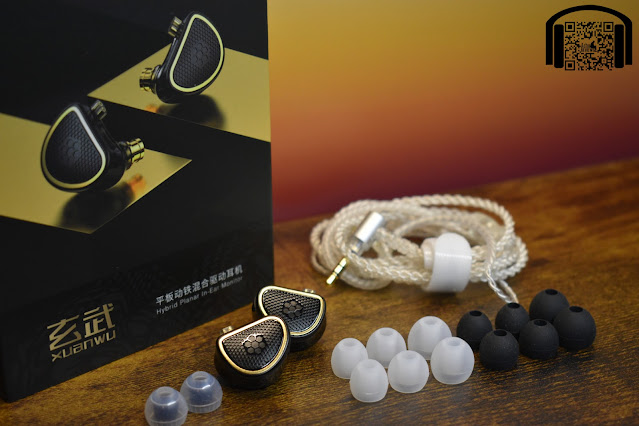
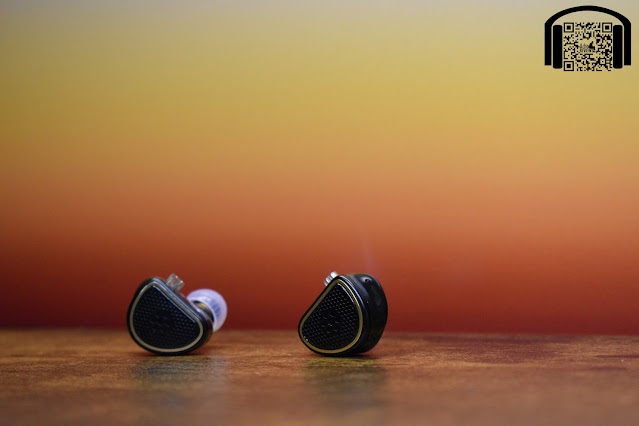

.png)
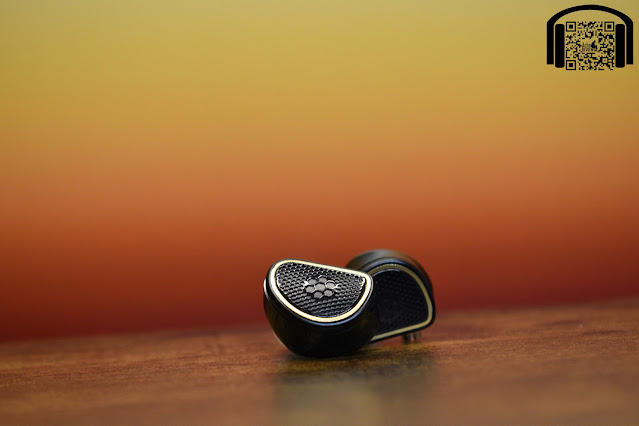


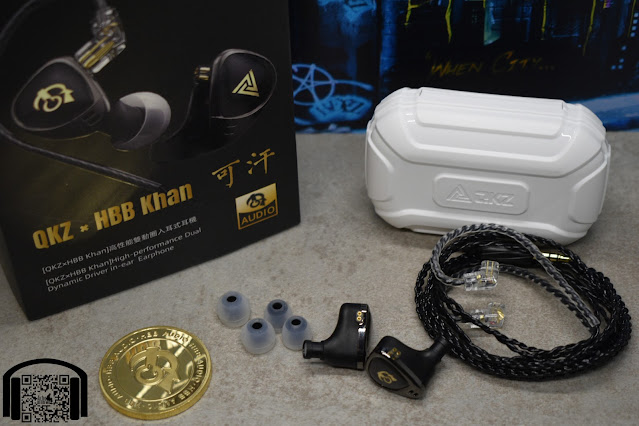
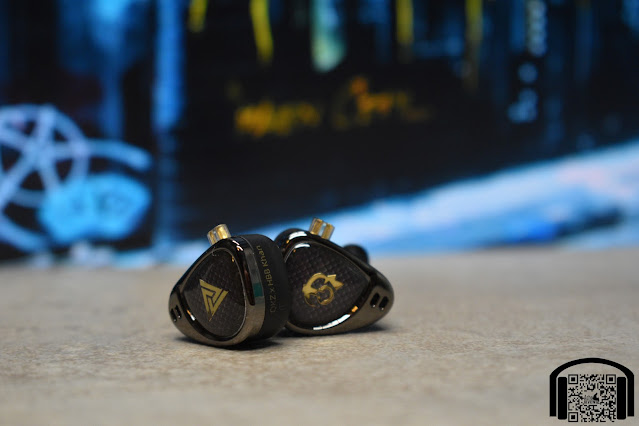
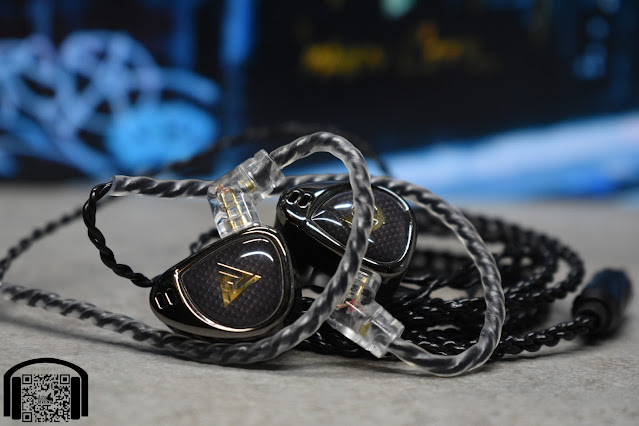
.png)
.png)
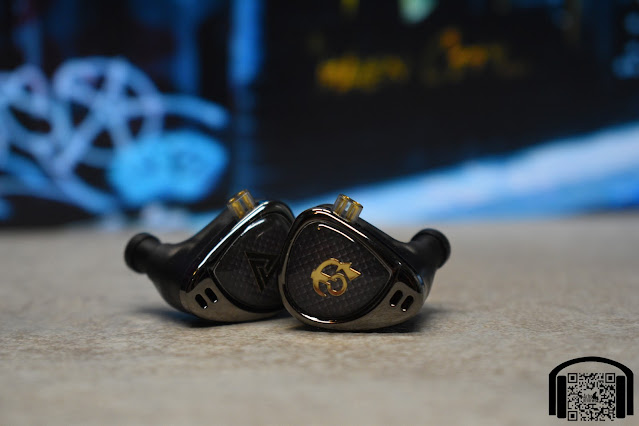
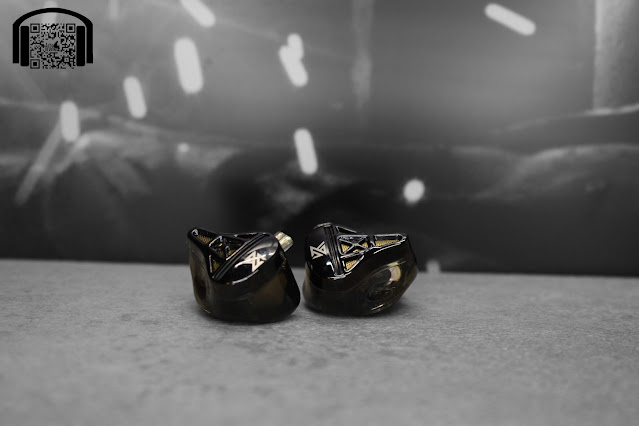
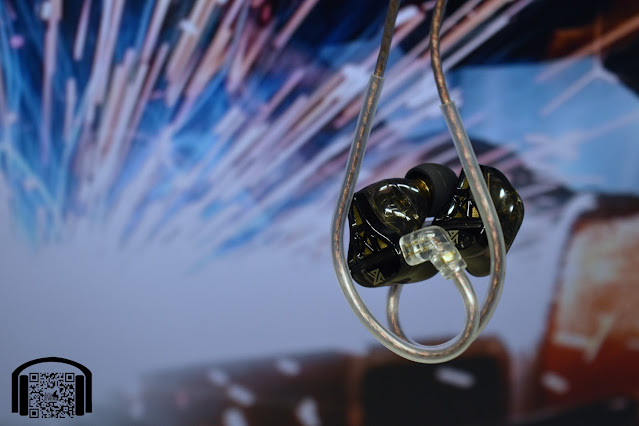


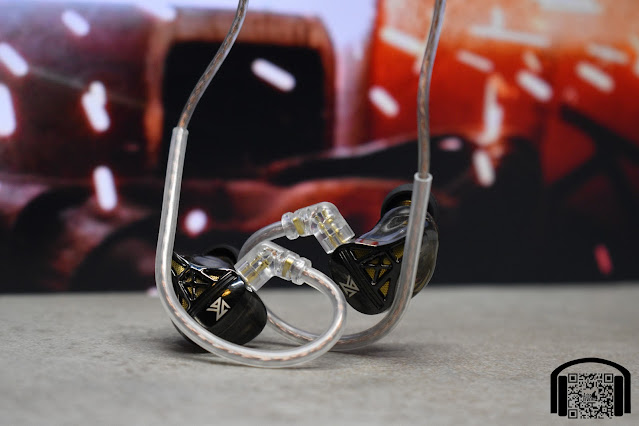
.png)
.png)
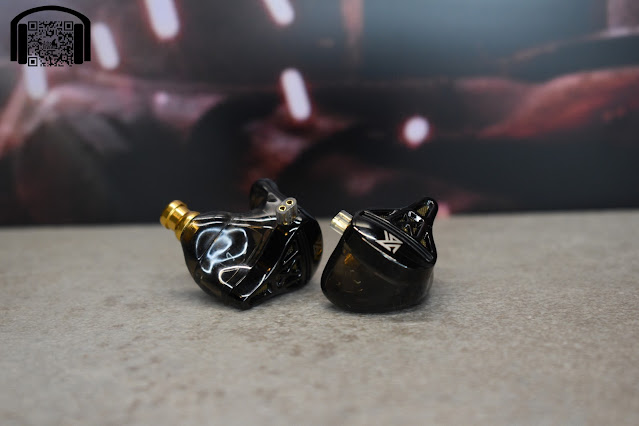
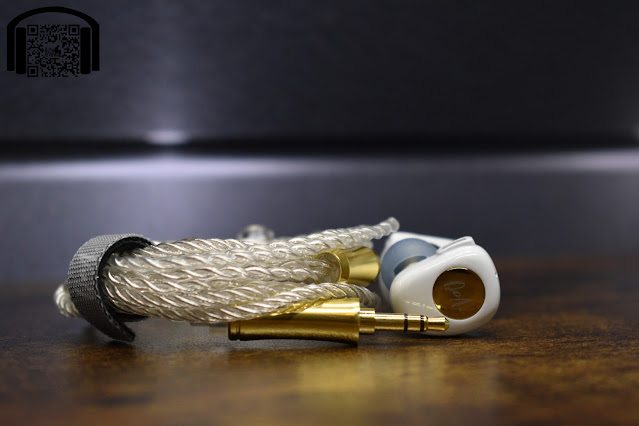
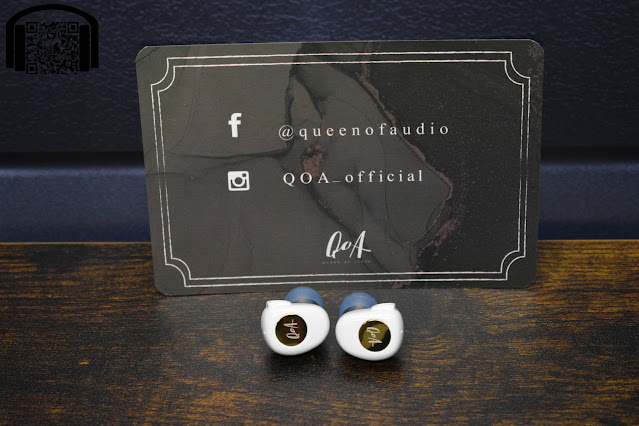

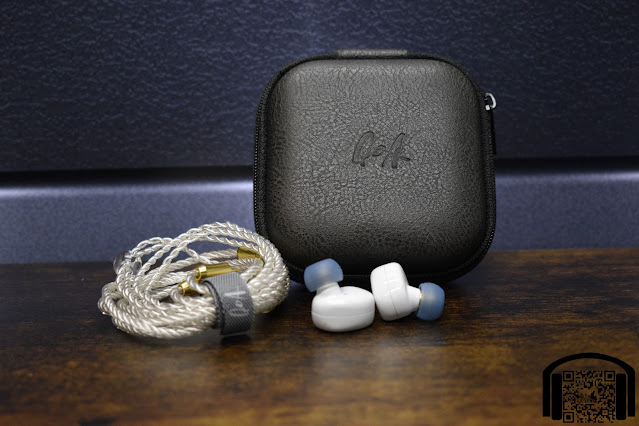

.png)
.png)



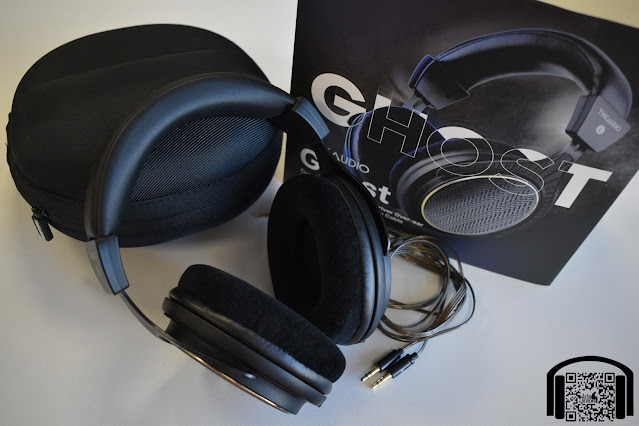


%20vs%20HD6XX%20(purple).jpg)
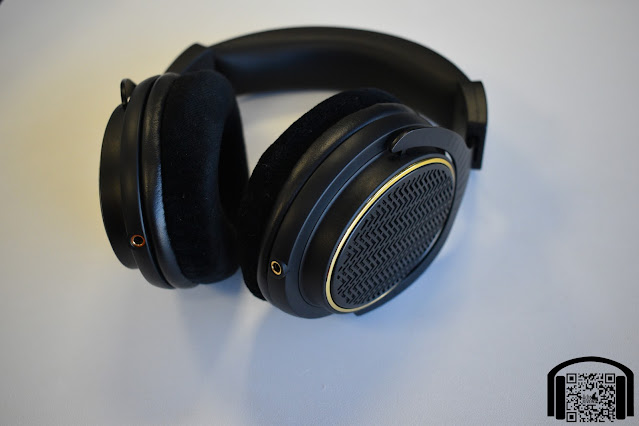
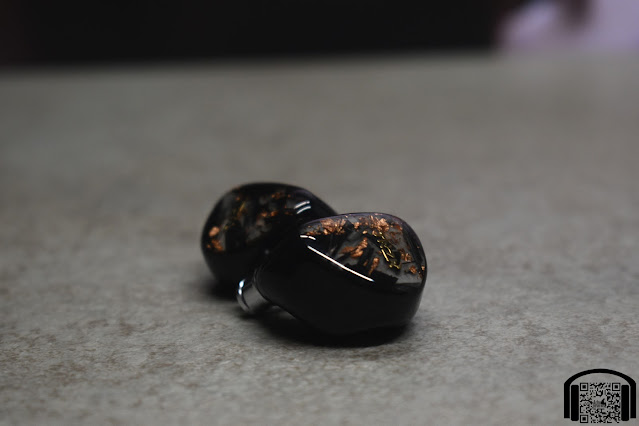
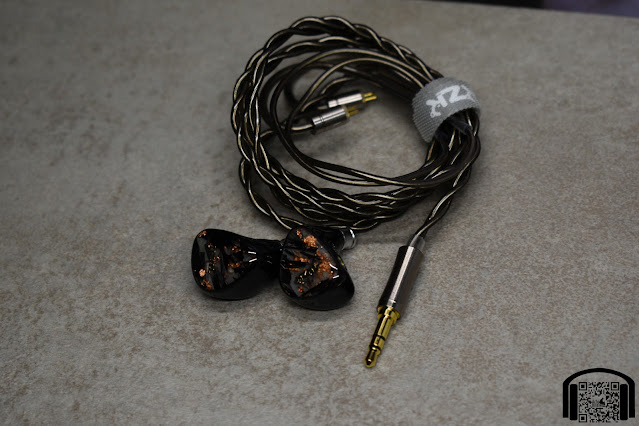
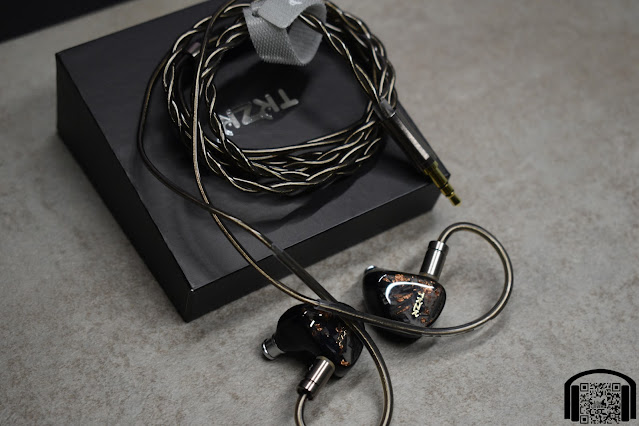



.png)


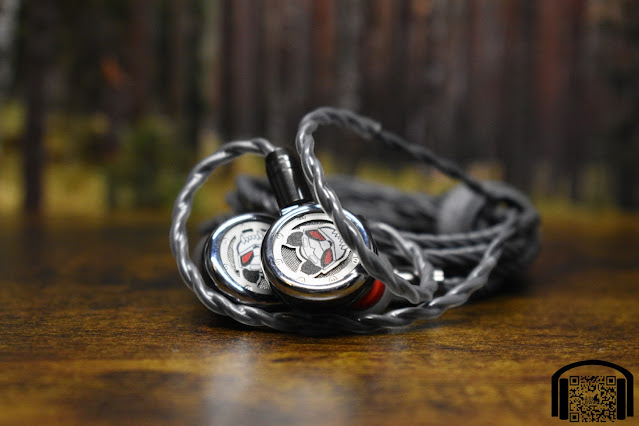
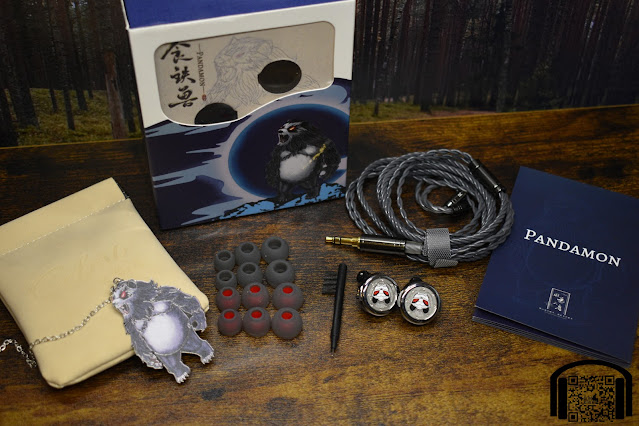
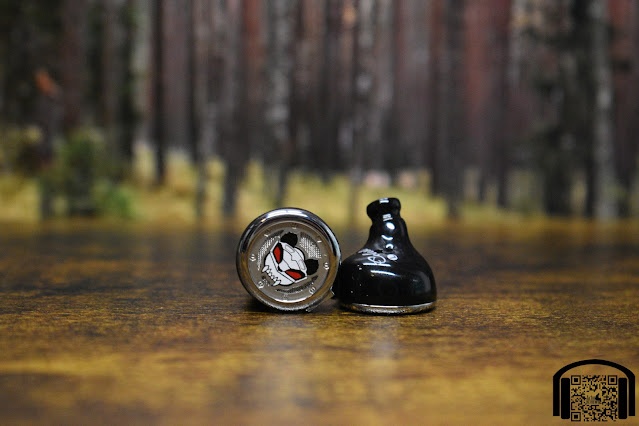

.png)
.png)
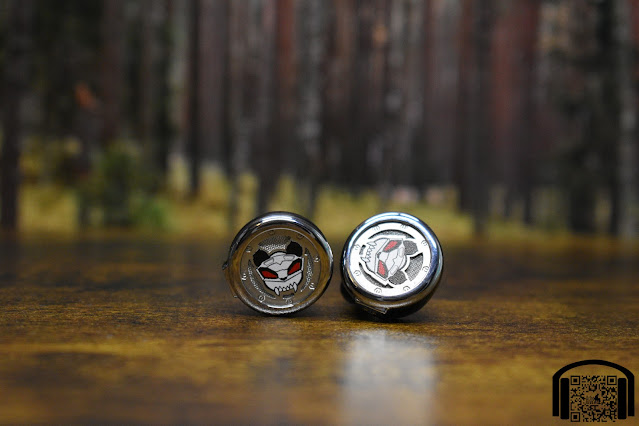


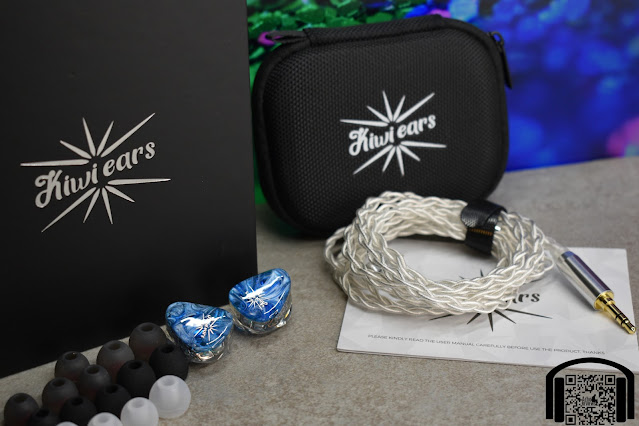


.png)


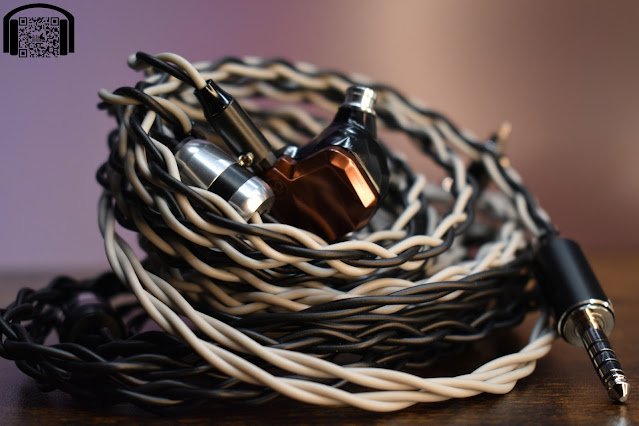


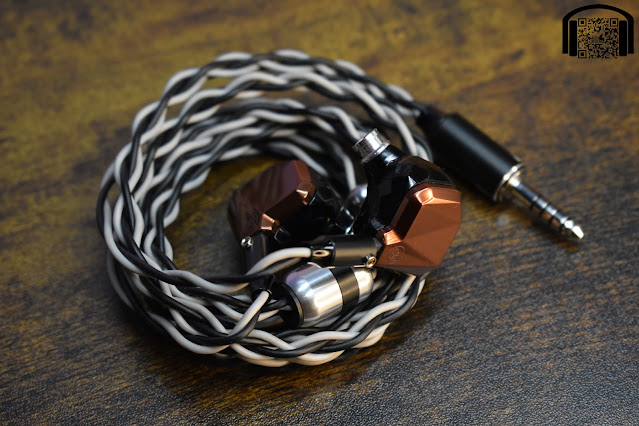
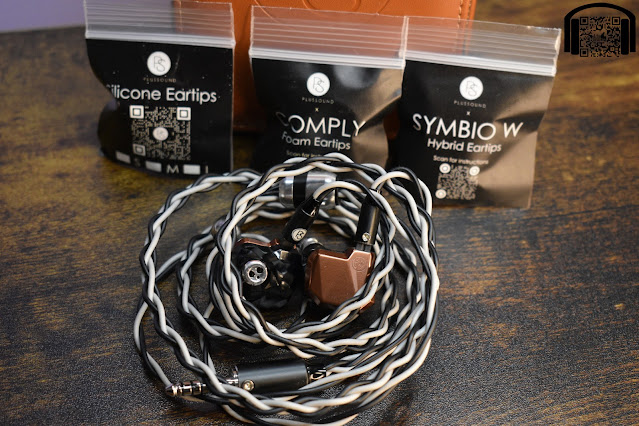



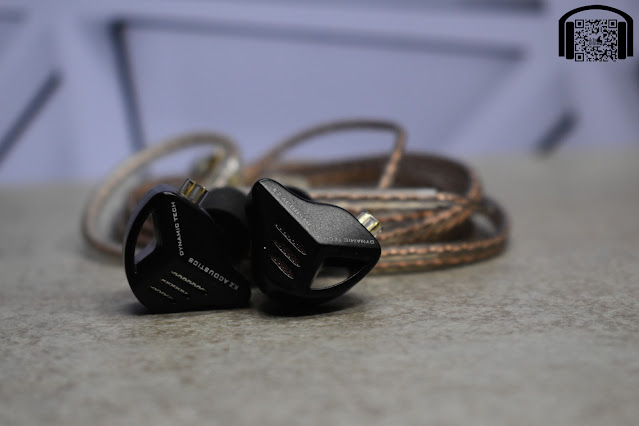
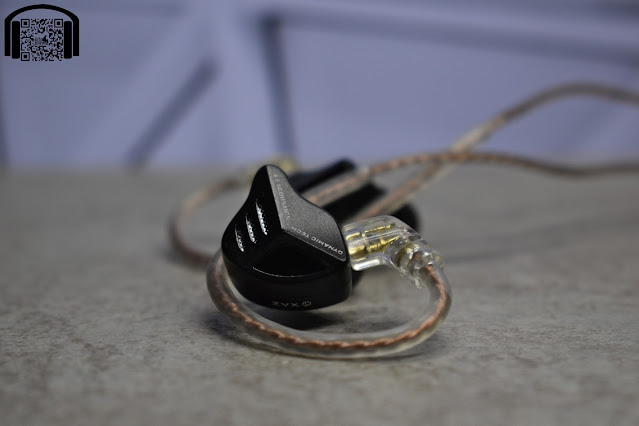
.png)
%20ISO.png)



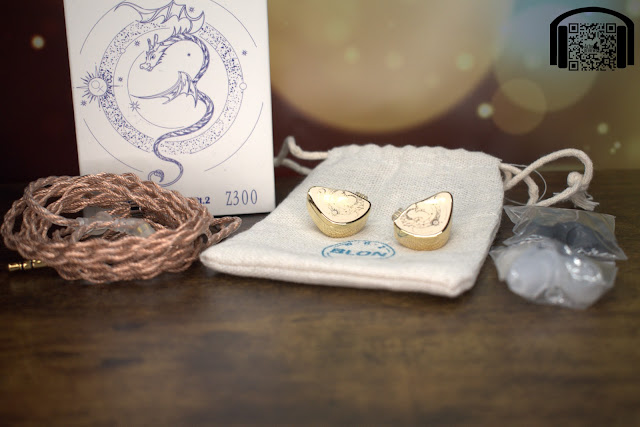

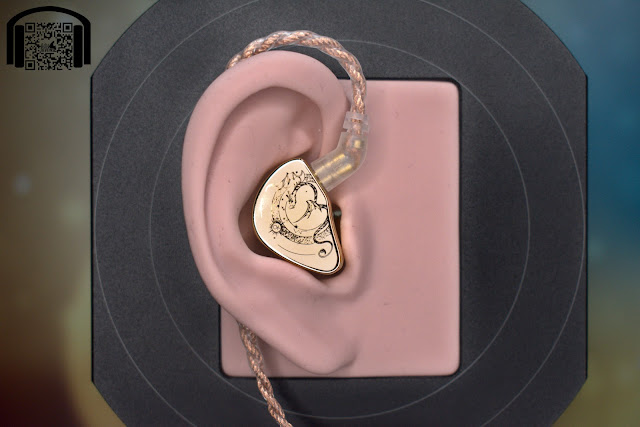
.png)



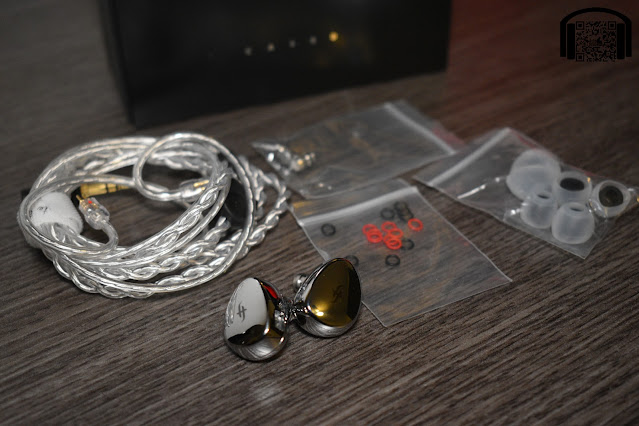



.png)



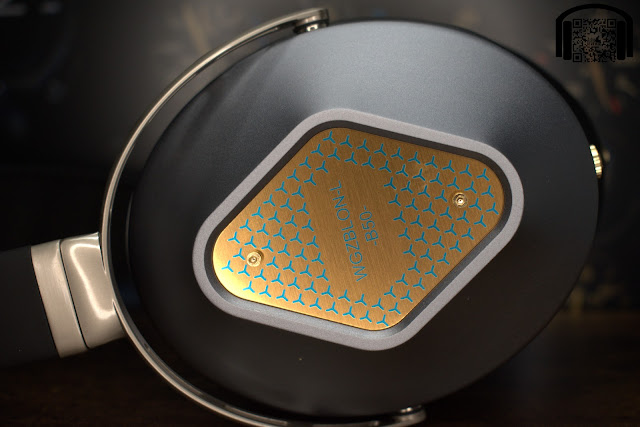


.jpg)






.png)


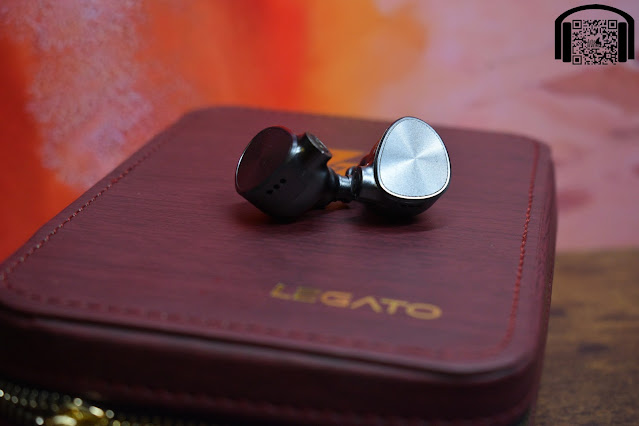



.png)
